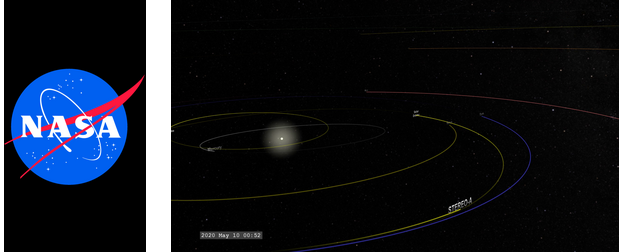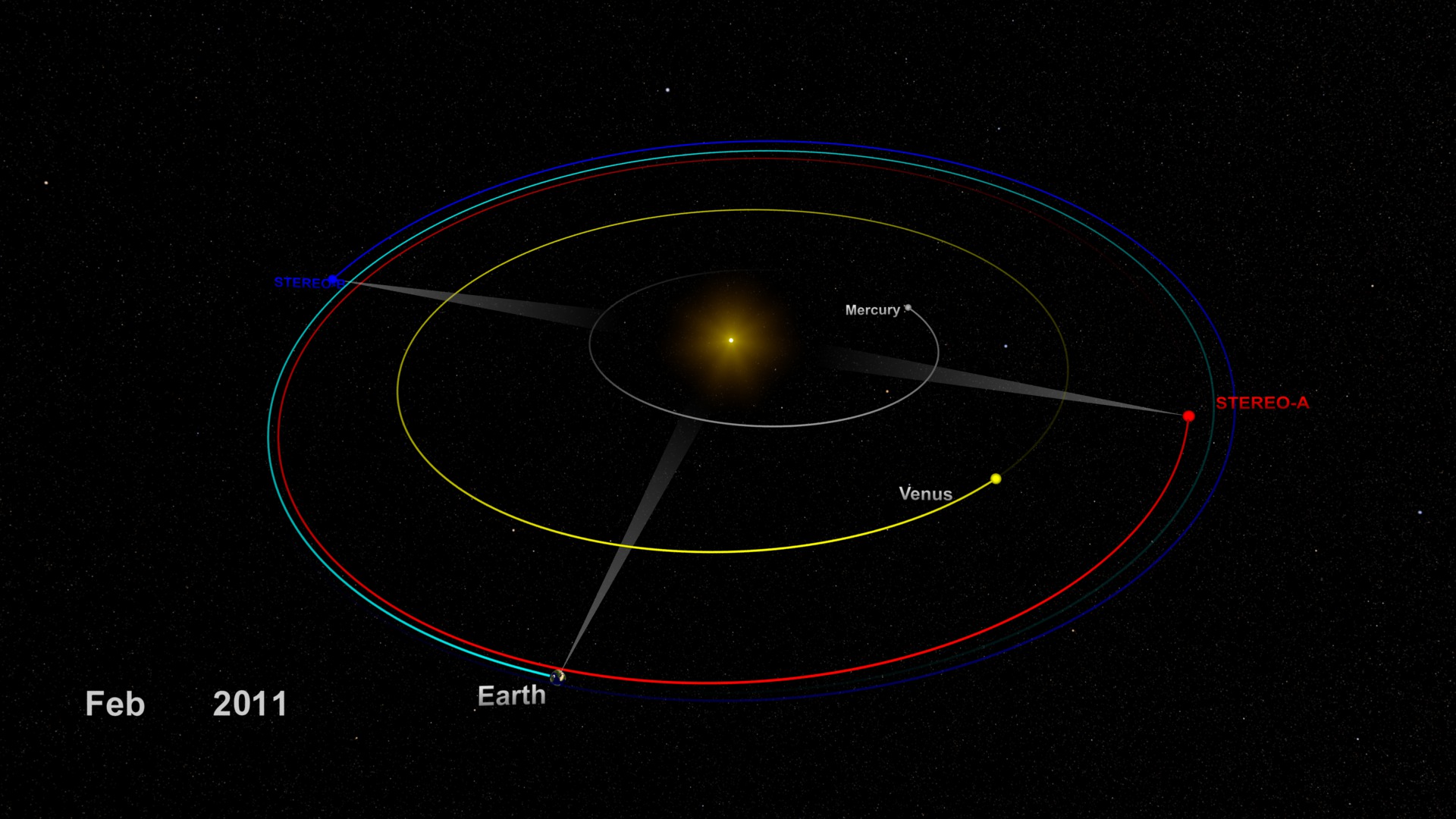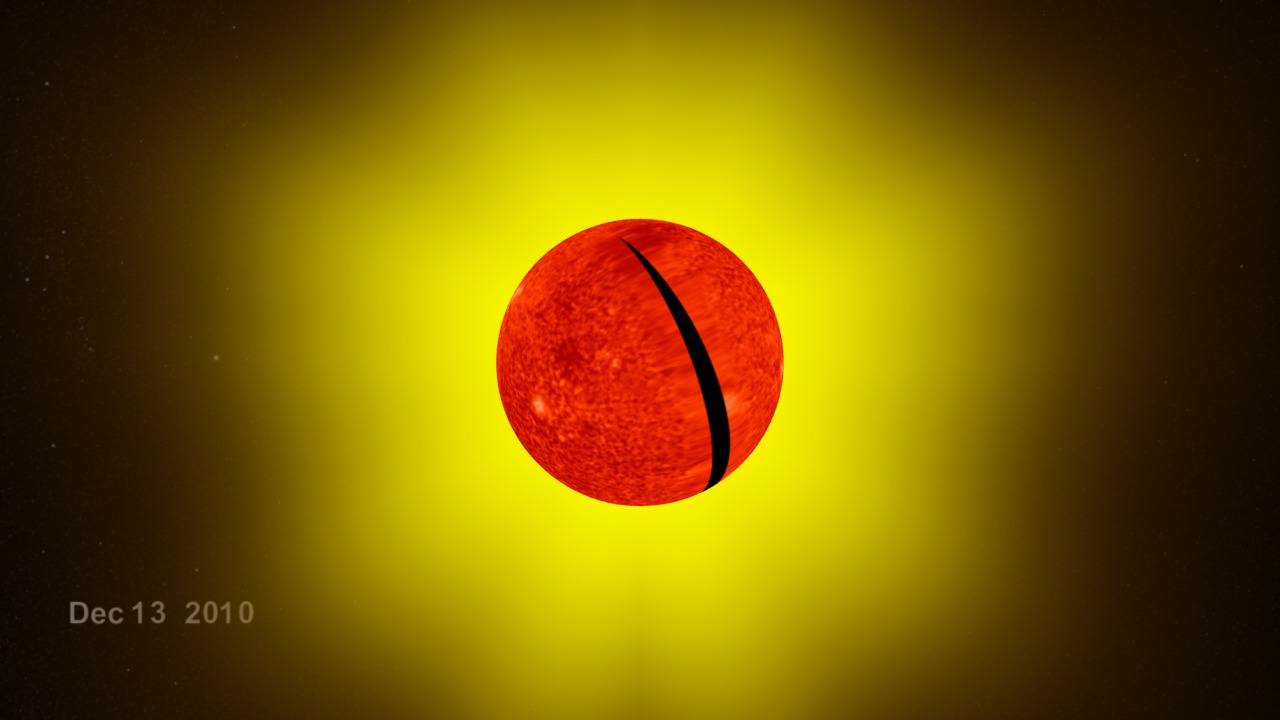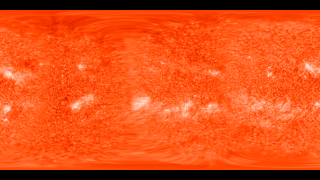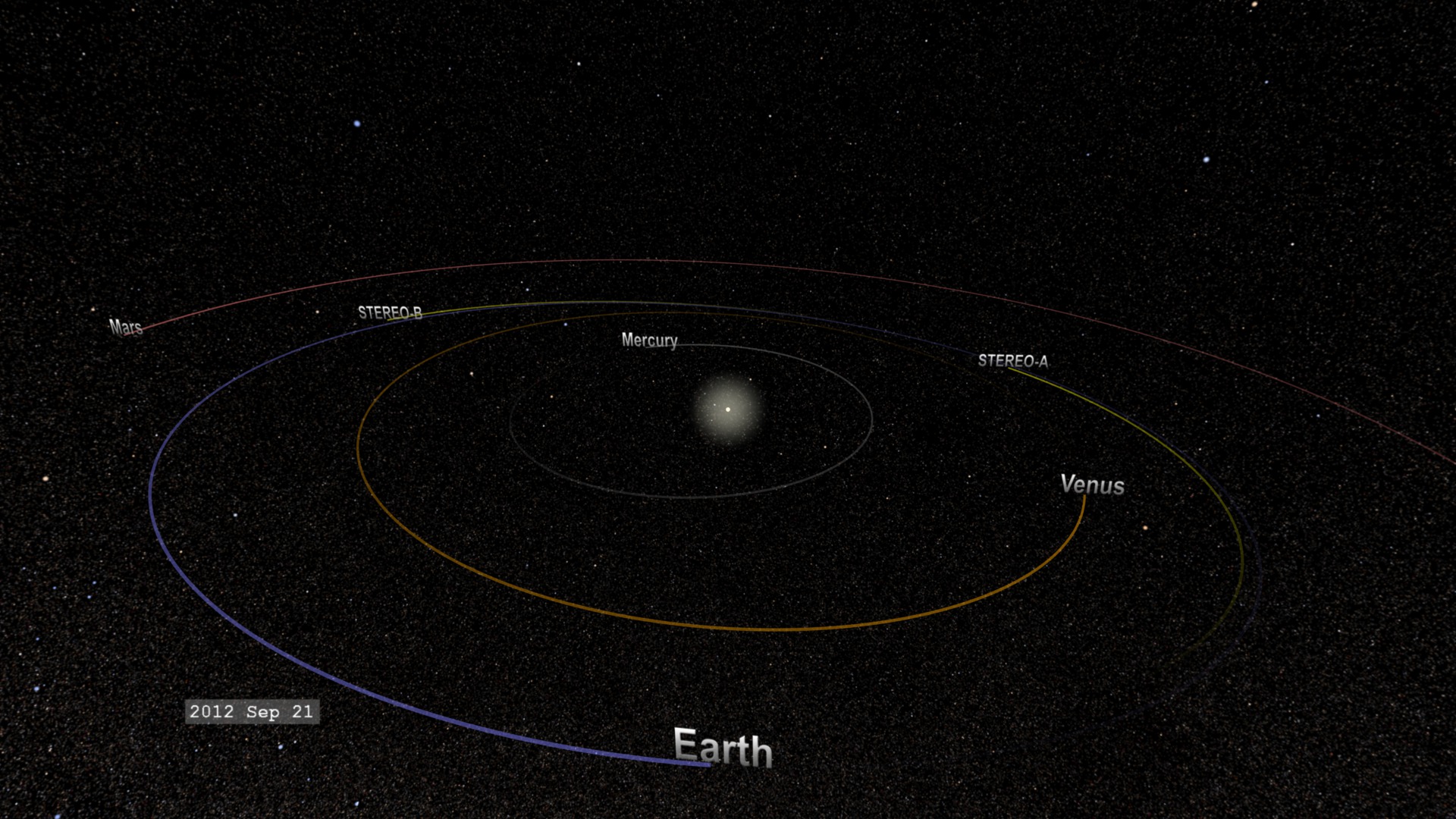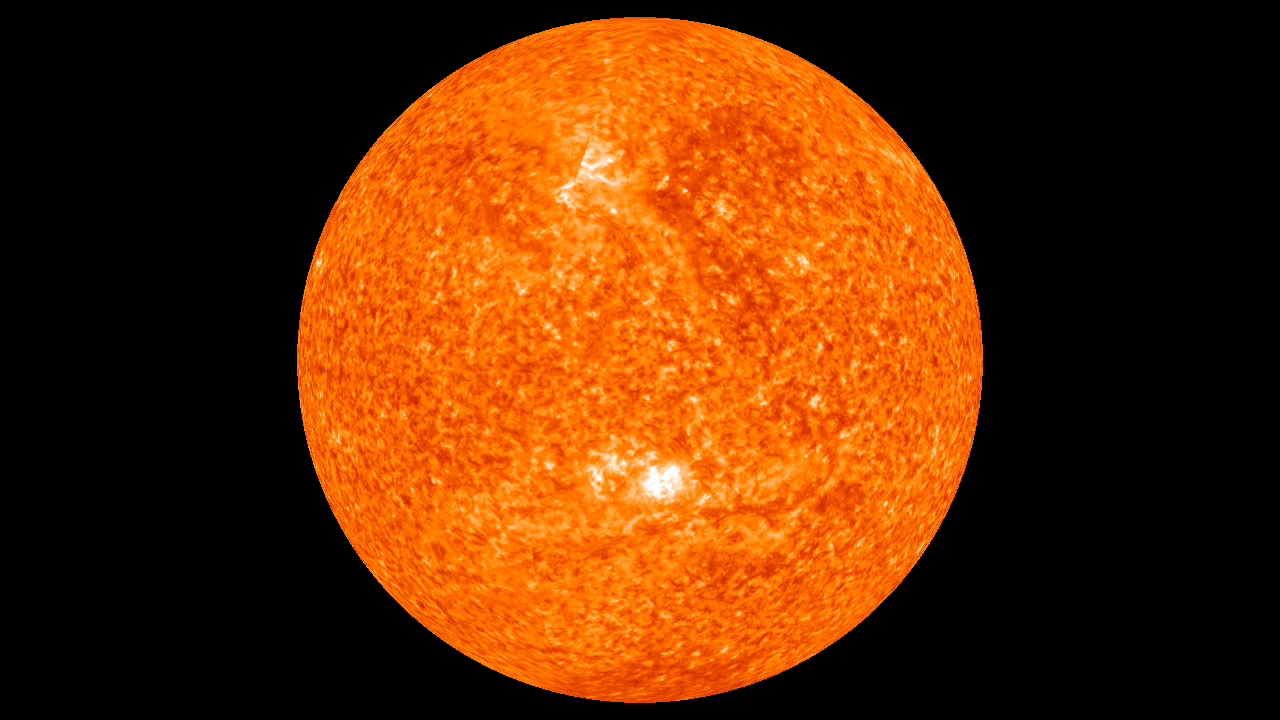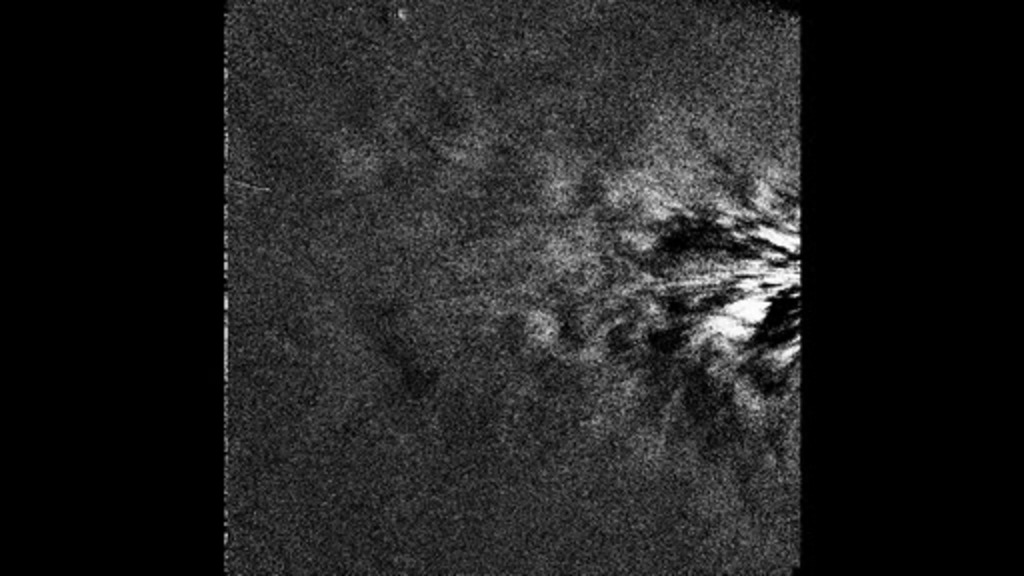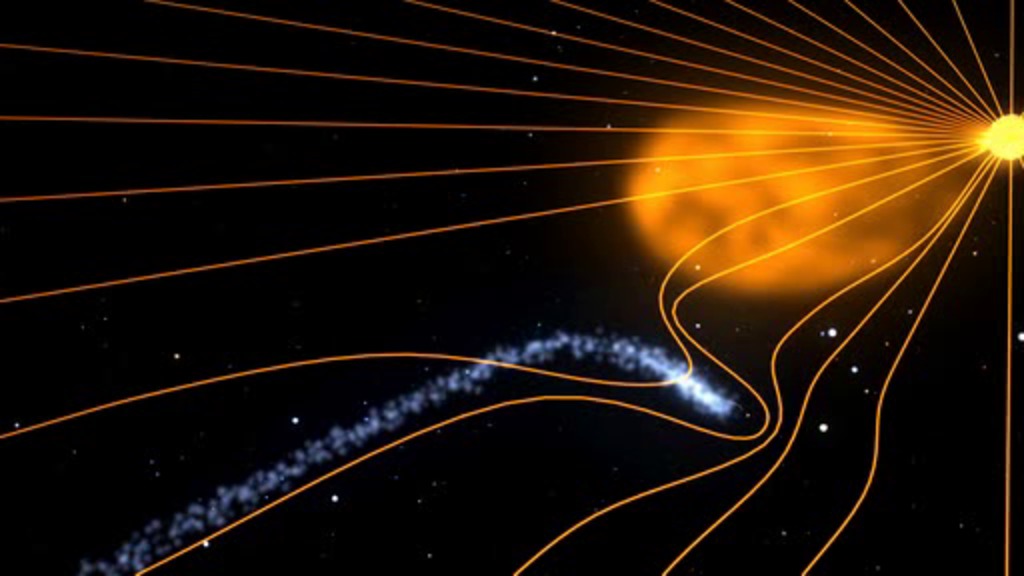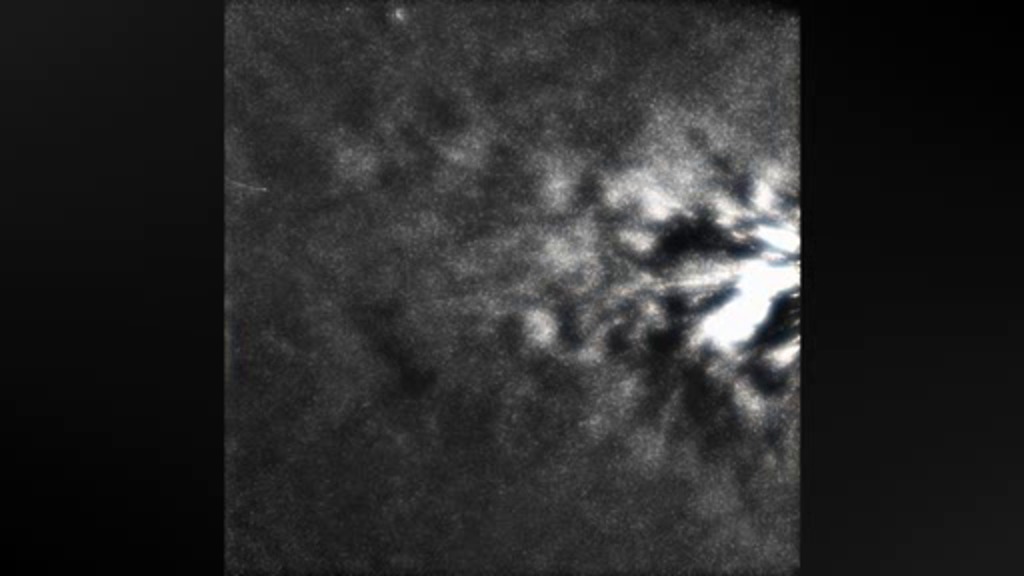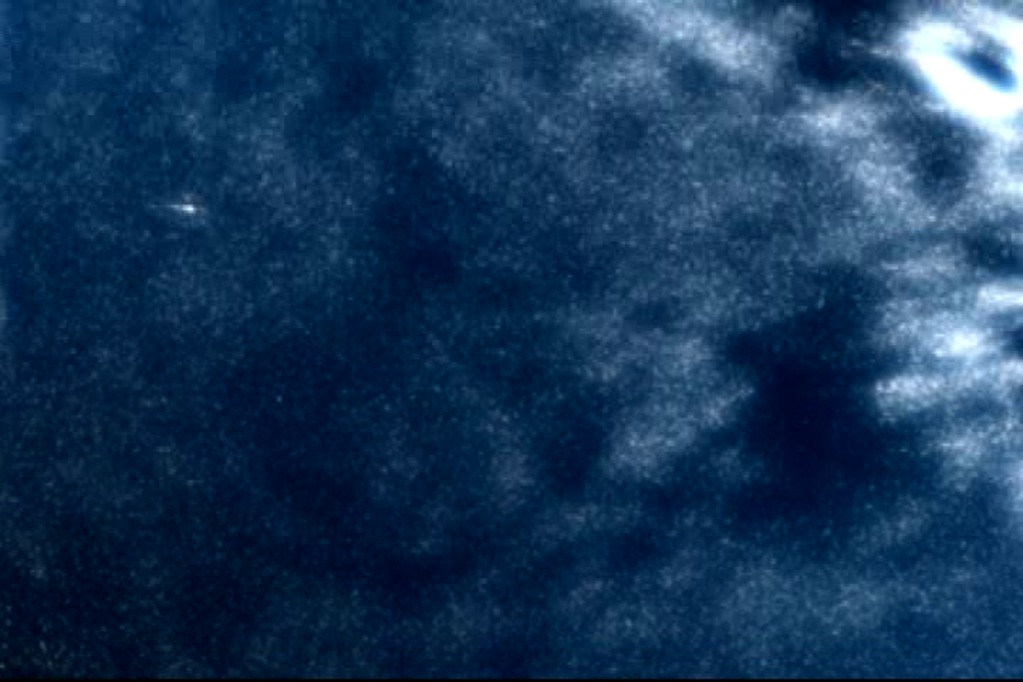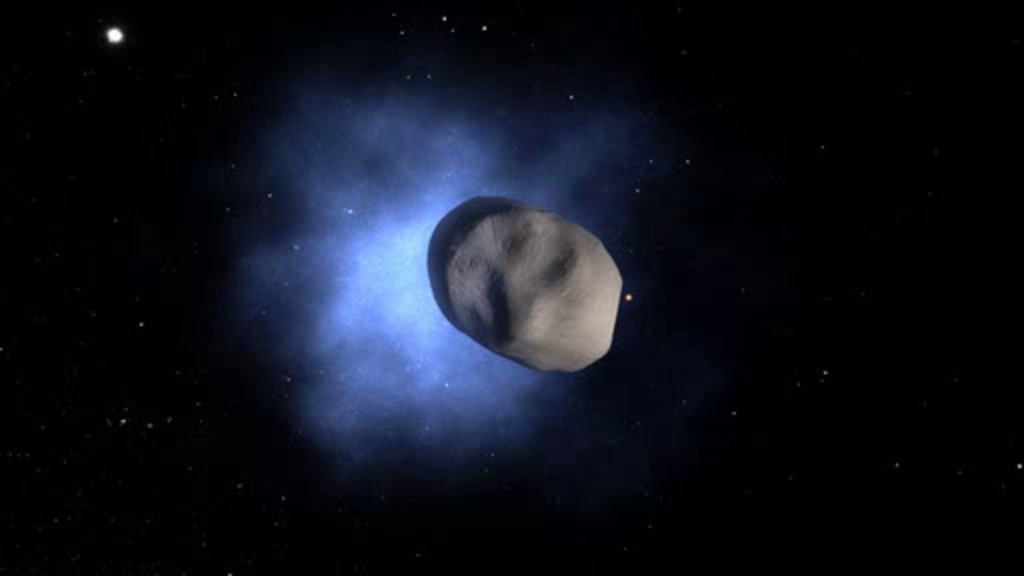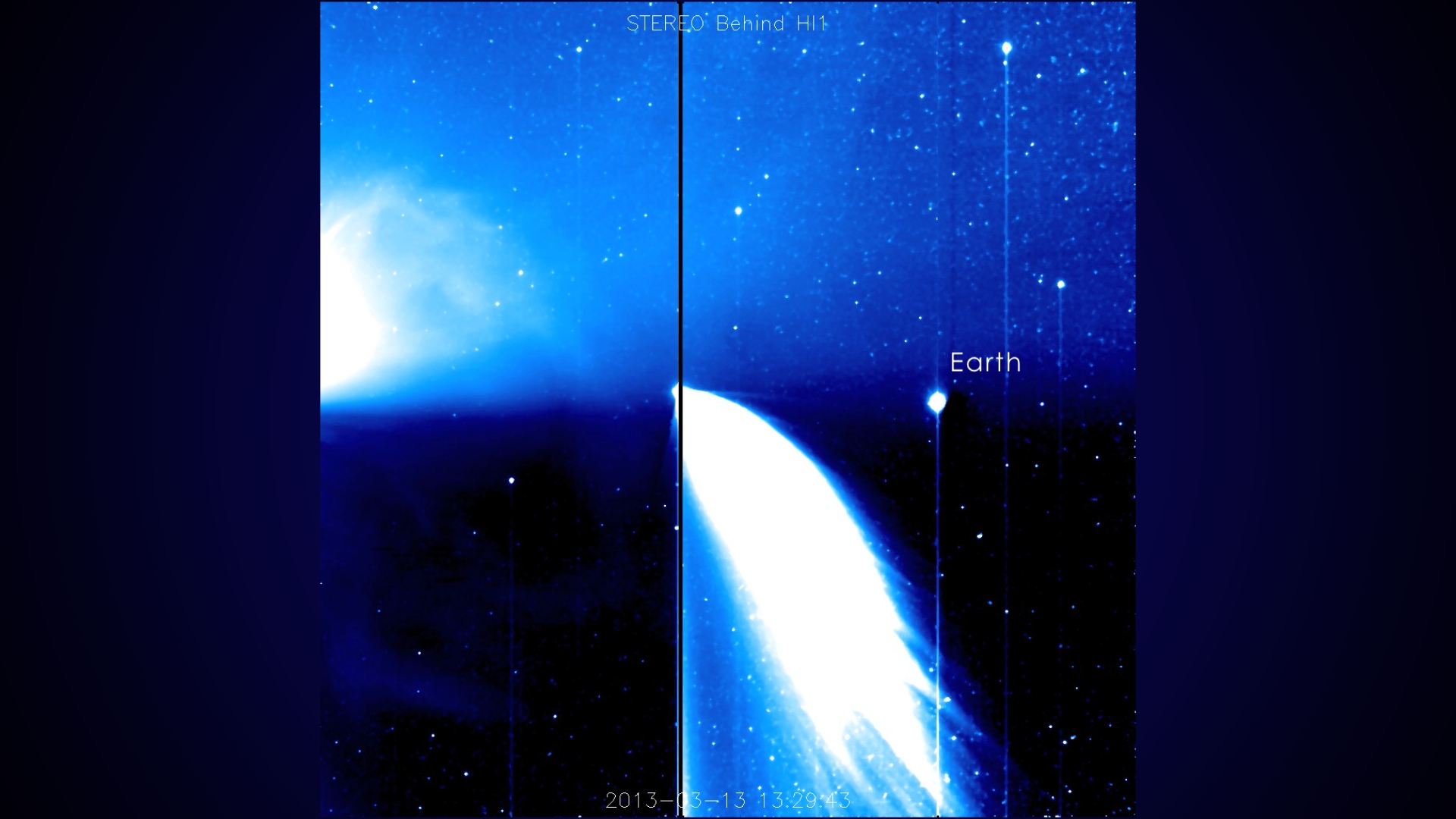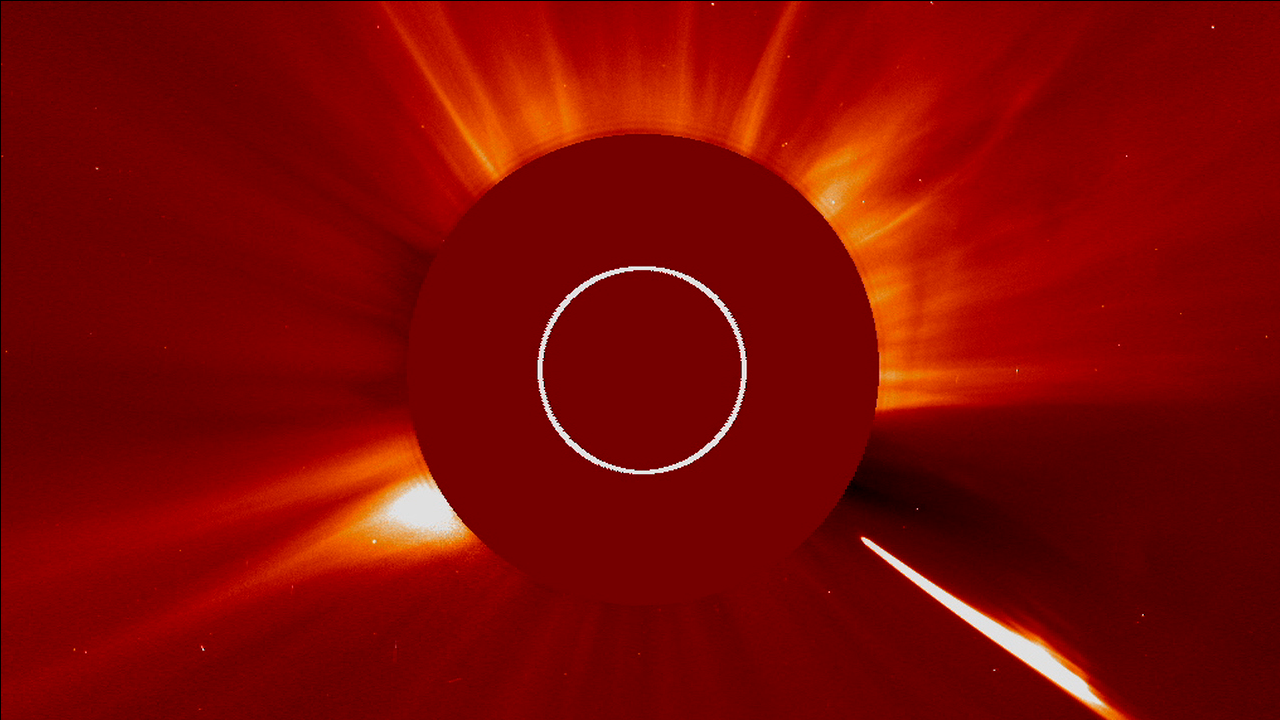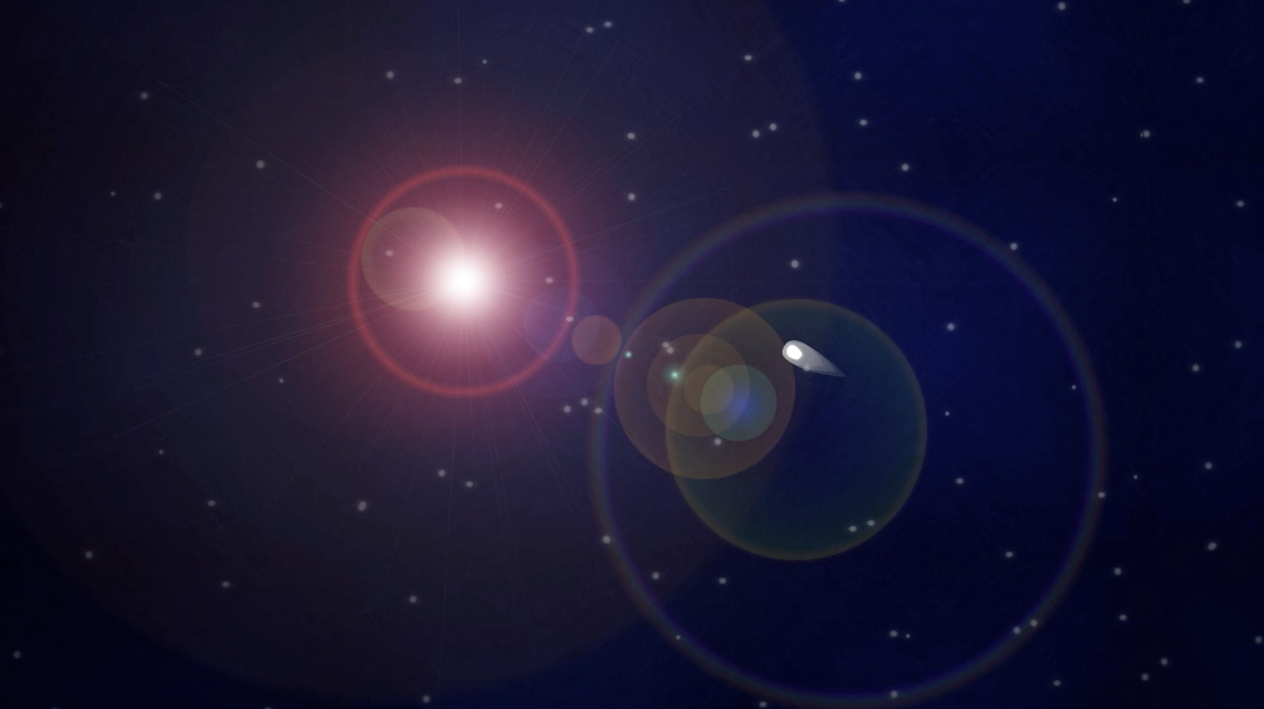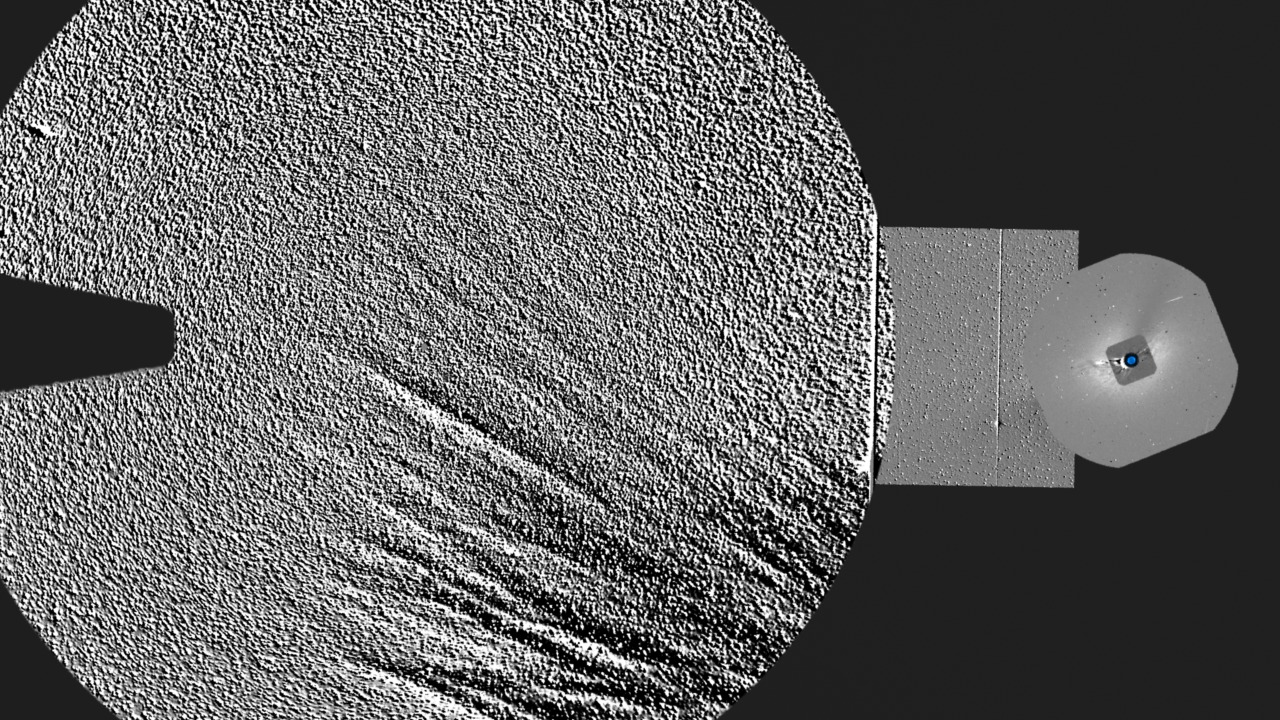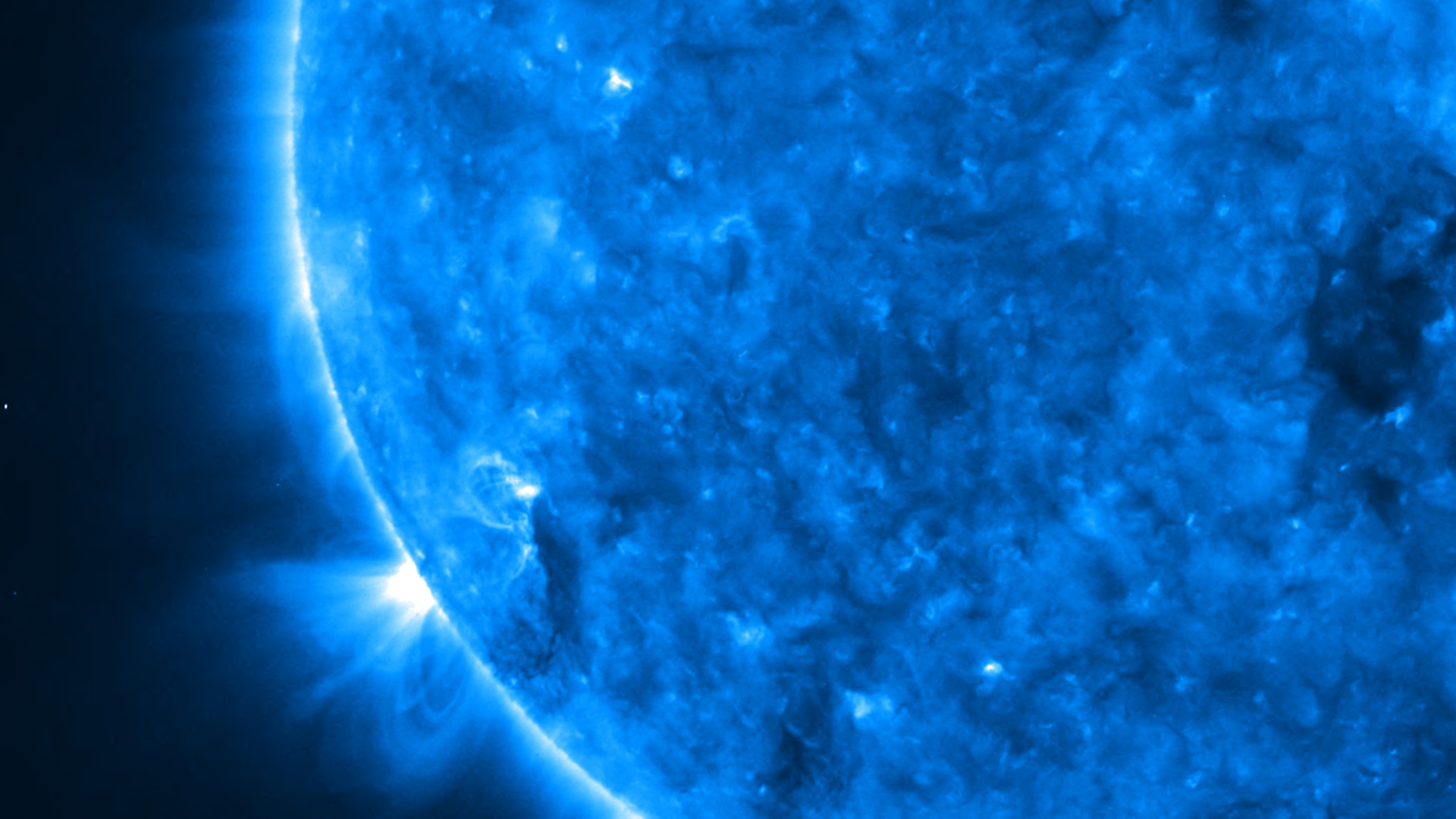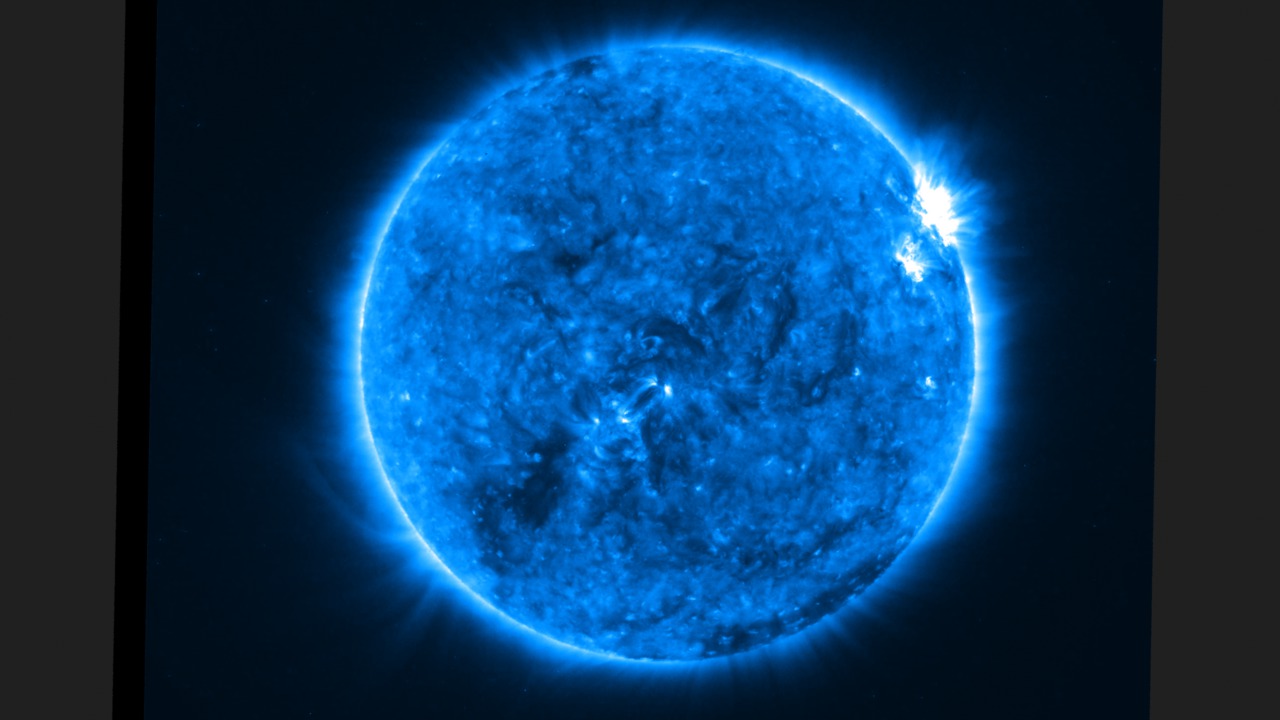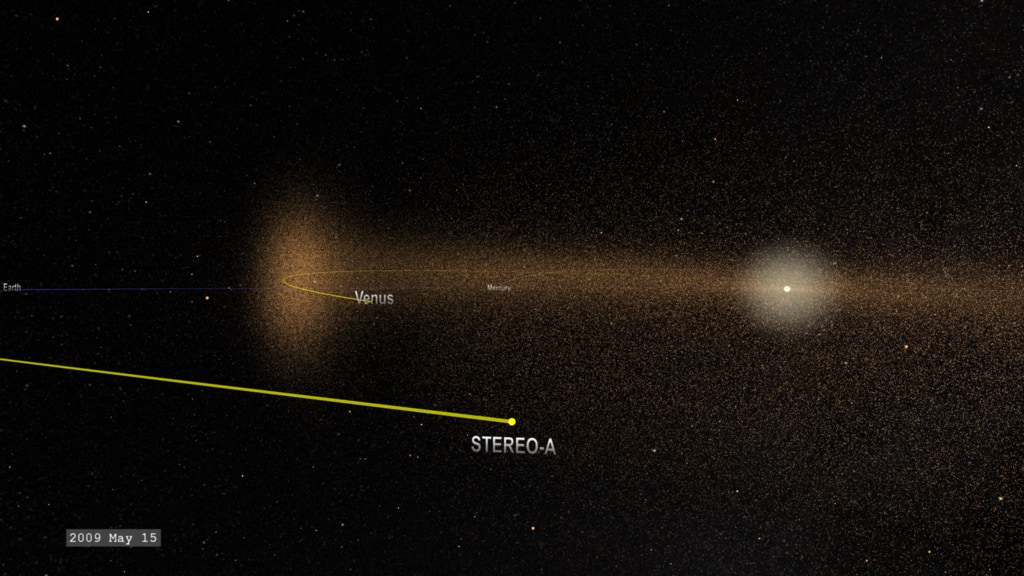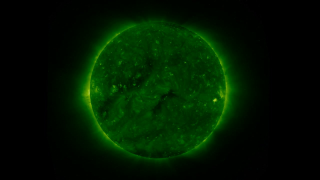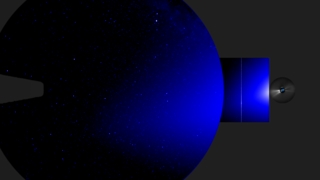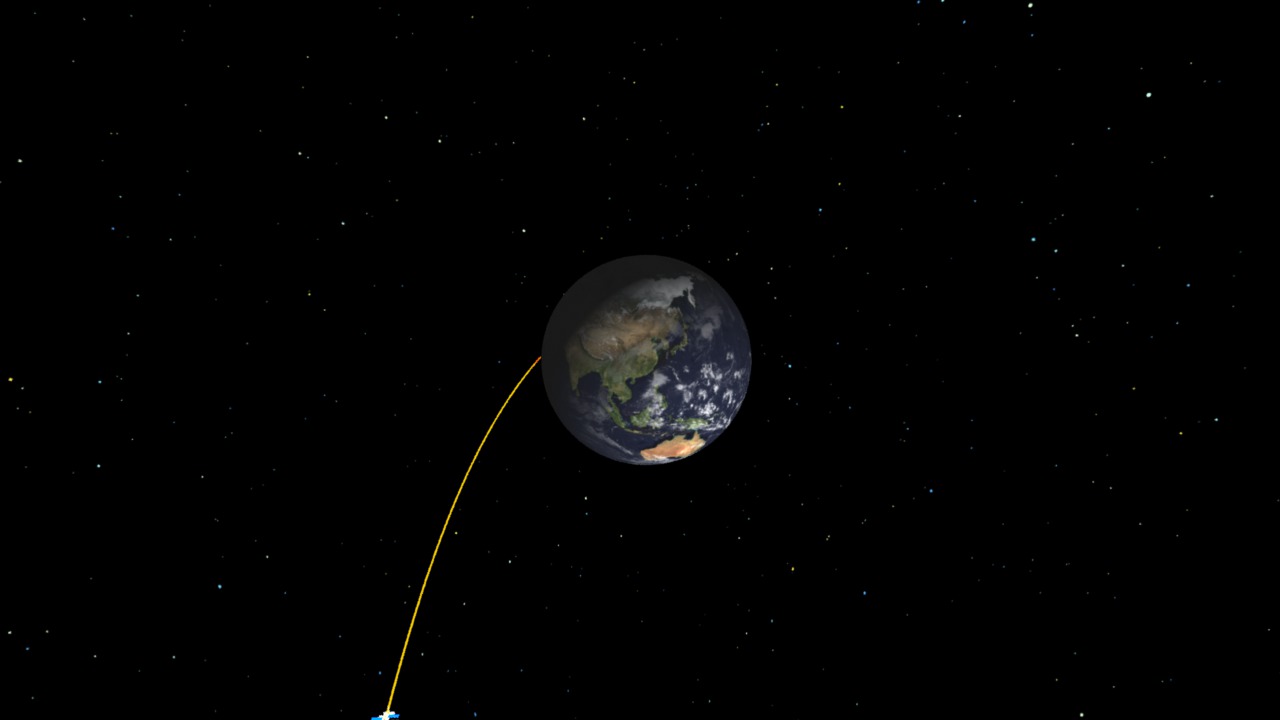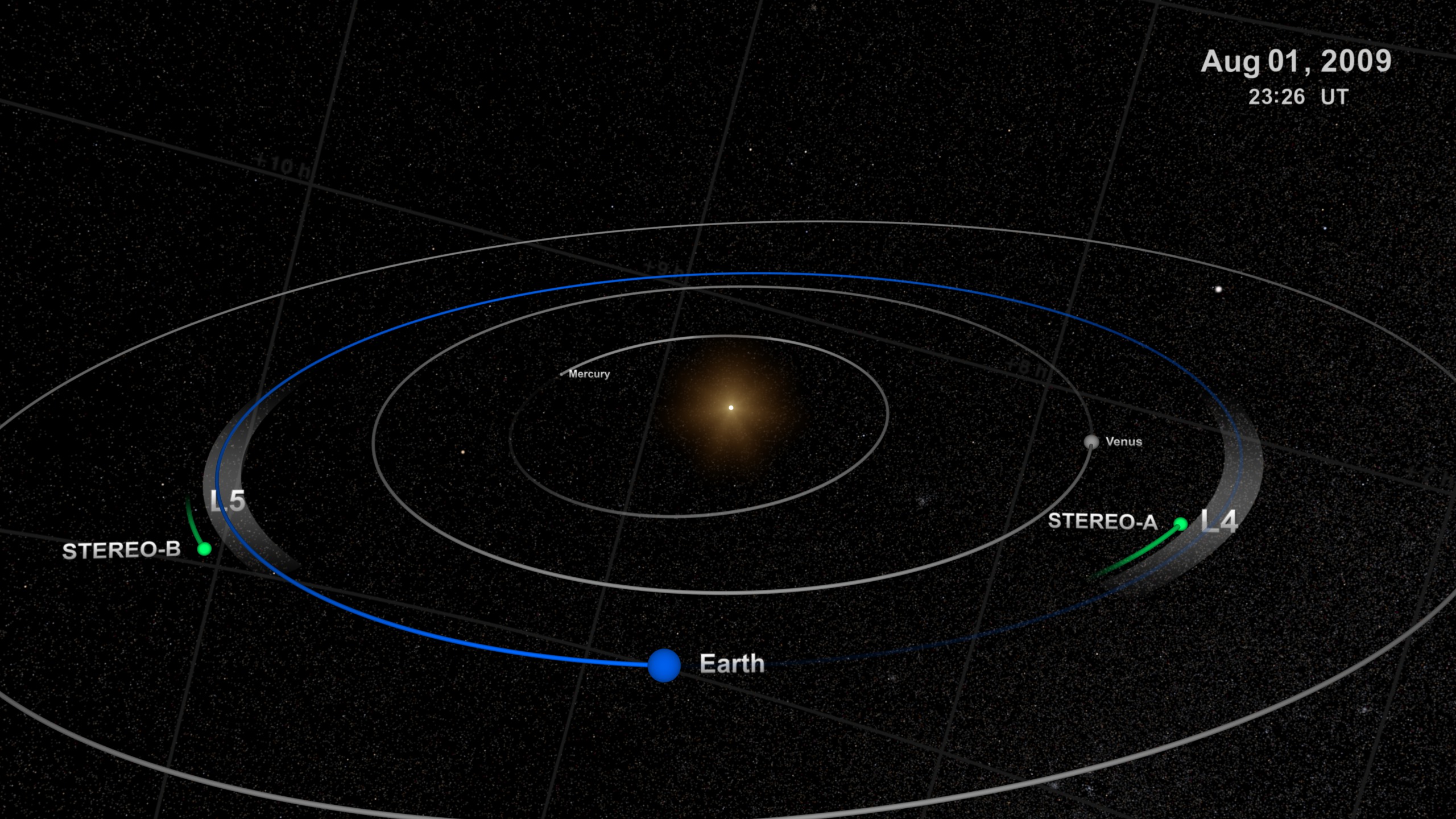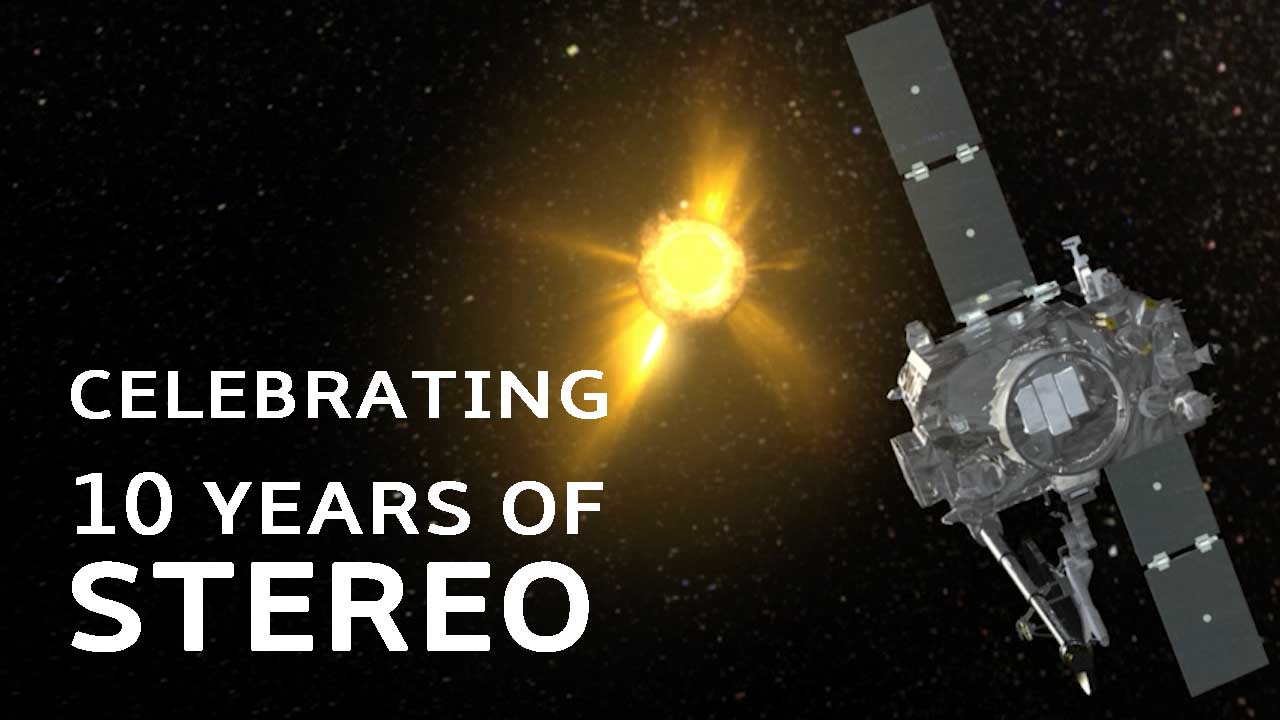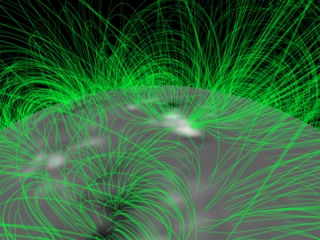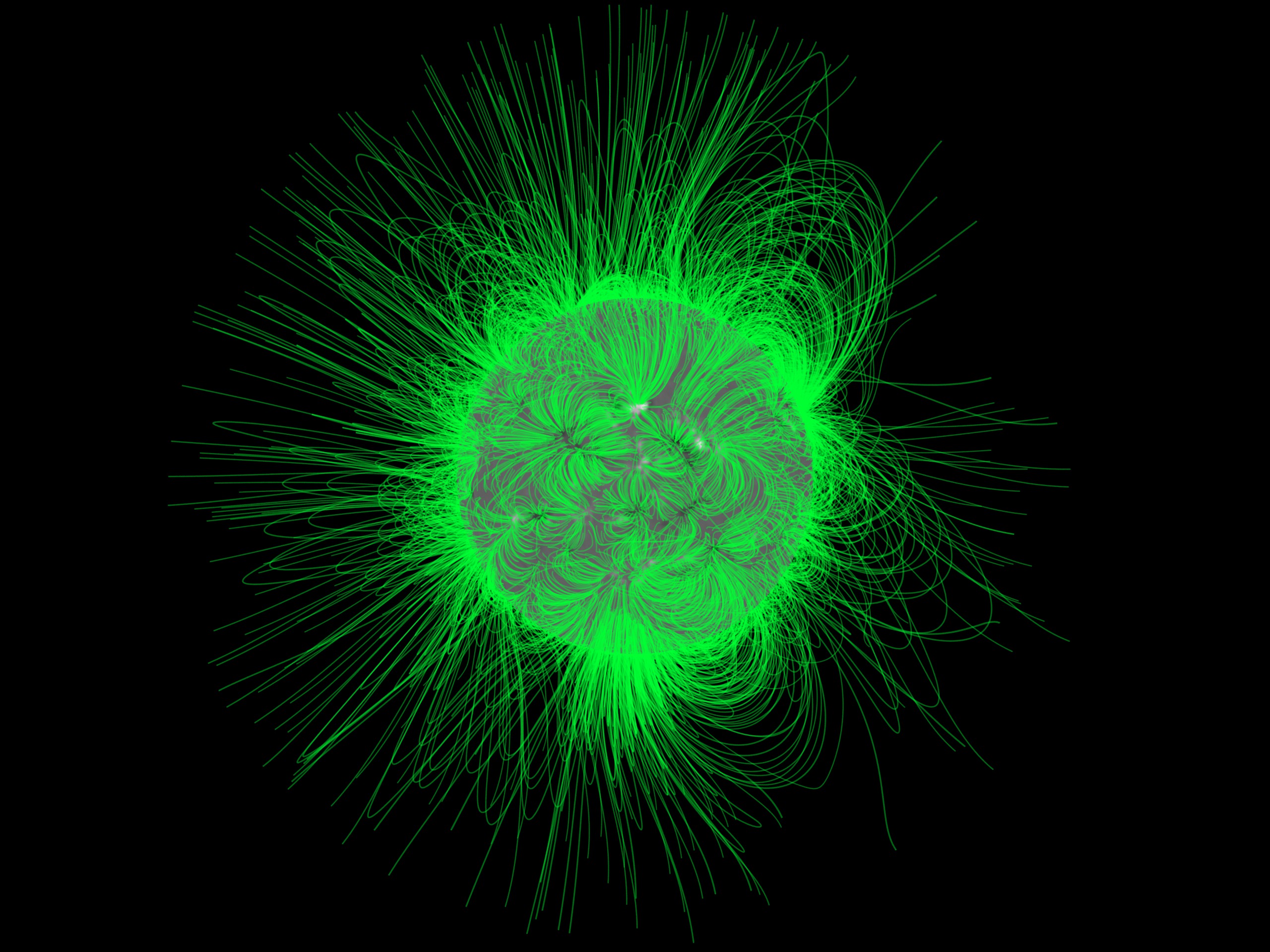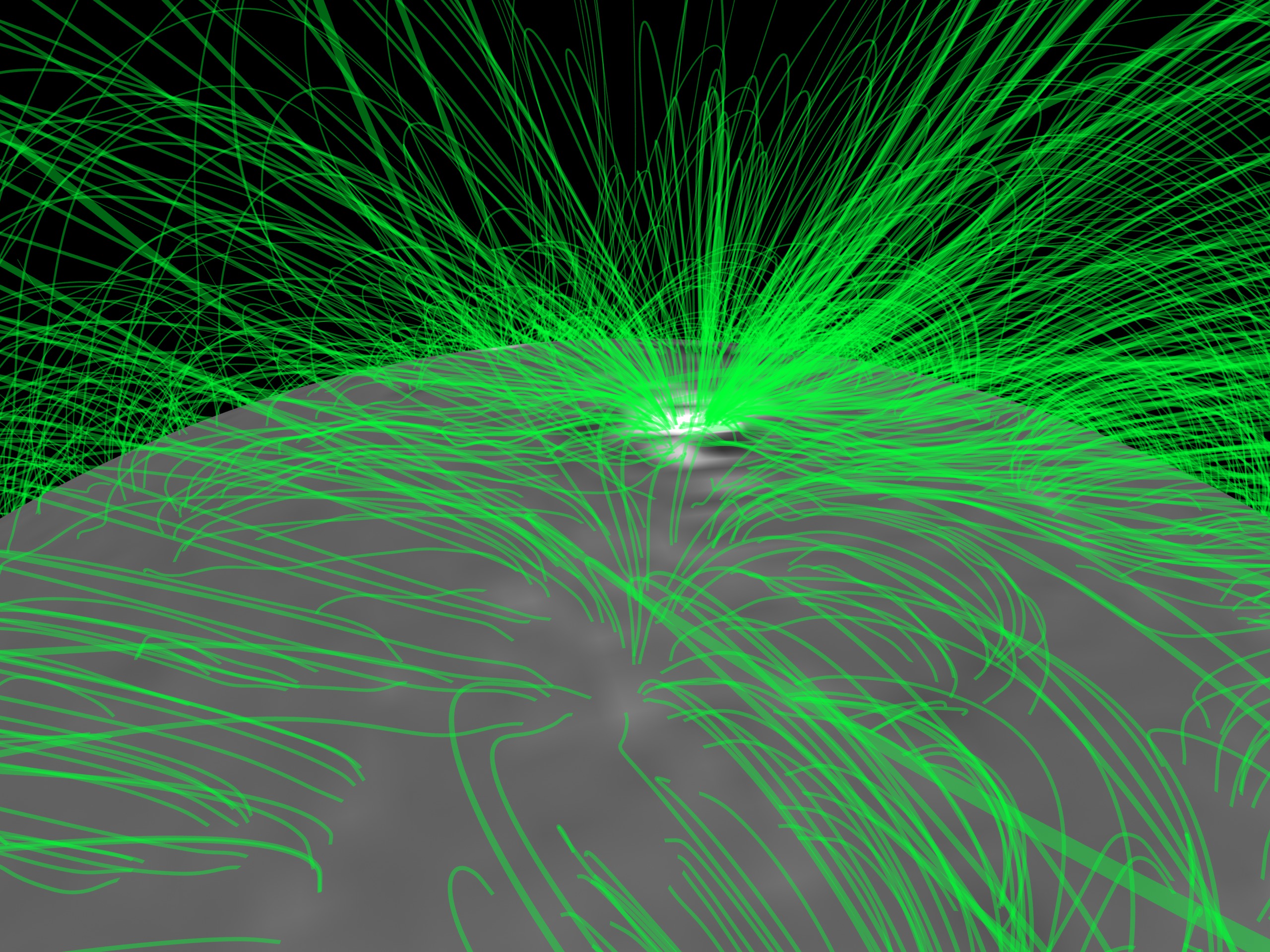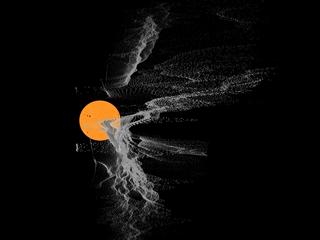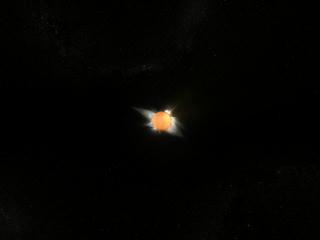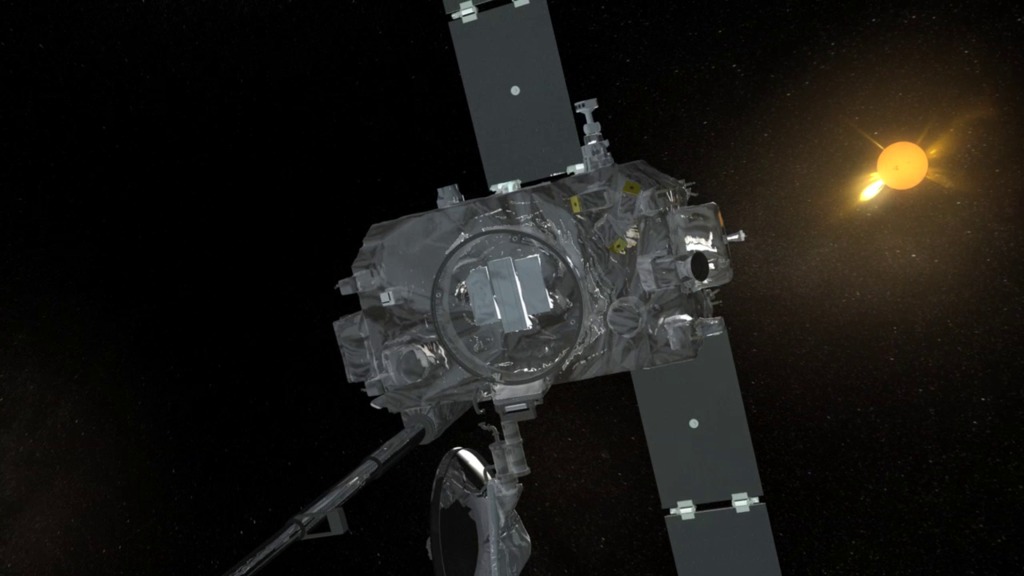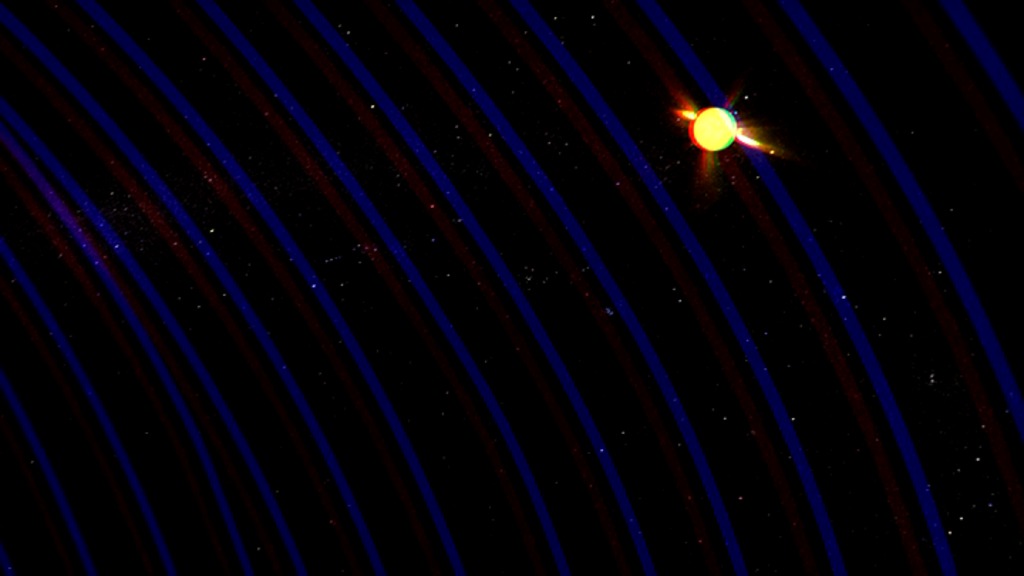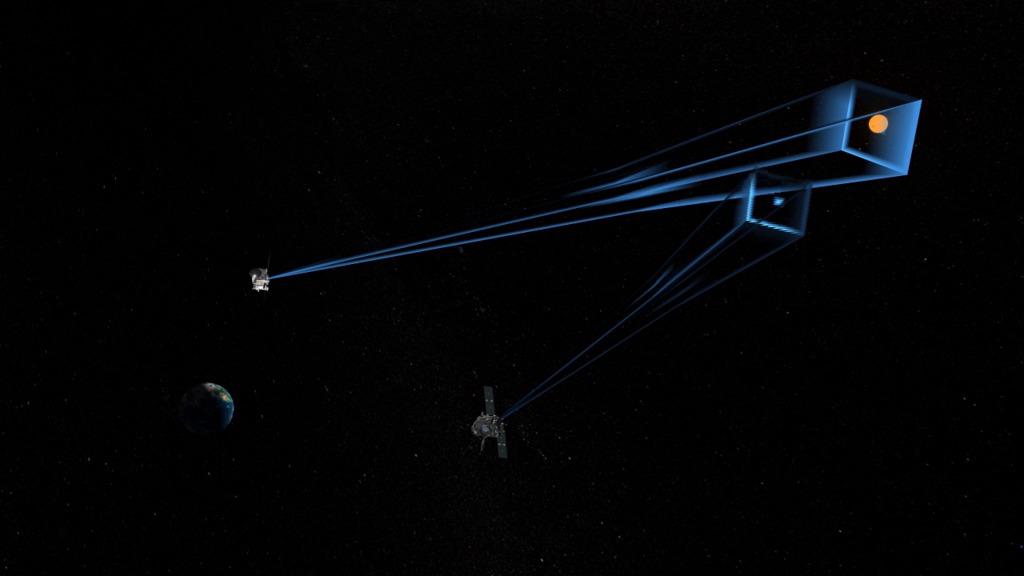STEREO Mission
Overview
The STEREO mission, launched on October 26, 2007, consisted of two satellites equipped with ultraviolet imagers for the solar disk (EUVI), coronographs (COR) and heliospheric imagers (HI) for observing the Sun and the region around it from persepectives not possible from Earth. STEREO-A was on a solar orbit slightly inside Earth's orbit and moving slightly faster to move AHEAD of Earth. STEREO-B orbited the Sun slightly outside Earth's orbit so it slowly moved BEHIND Earth. Over time, eventually the missions would cross paths on the far side of the Sun from Earth.
STEREO-A is still in operation as of this writing and the STEREO mission continues to bring its unique viewpoint to studies of the Sun and heliosphere. Contact was lost with STEREO-B on September 23, 2016 and despite repeated attempts, it was not recovered.
STEREO - the Second Time Around
The still functioning STEREO-A passes by Earth again. This enables the construction of a new set of stereo images using the Earth-orbiting SDO as the extra eye.
STEREO-A Returns by Earth
Go to this pageThe Solar Terrestrial Relations Observatory (STEREO) mission was launched on October 25, 2006, with the purpose of tracing the flow of energy and matter from the Sun to Earth. The STEREO mission began with two spacecraft: STEREO-A and STEREO-B. Each was launched into Sun-orbiting trajectories - STEREO-A moving ahead of Earth, and STEREO-B moving behind Earth (STEREO's Routes to Solar Orbits). In mid-August 2023, the still-operational STEREO-A (STEREO-B went offline in October 2014) will pass Earth for the first time since its launch 17 years ago. Like race cars driving different speeds around a circular track, STEREO-A is traveling slightly faster than Earth around the Sun. After launch, STEREO-A pulled ahead of Earth and extended its lead a little bit more with each orbit. Now, STEREO-A’s lead is so great that it is catching up to Earth from behind and is about to “lap” Earth, having completed 18 circuits around the Sun while Earth completed just 17. ||
STEREO - The Second Time Around...
Go to this pageIn mid-August 2023, the still-operational STEREO-A (STEREO-B went offline in October 2014) passed Earth for the first time since its launch 17 years ago. See also STEREO-A Returns by Earth.While STEREO-B is no longer available, it is possible to construct stereo imagery of the Sun using STEREO-A with Solar Dynamics Observatory (SDO). Here we present a series of images for corresponding filters between the two missions which can be used for stereo viewing.Color (SDO color table) Left/Right Image PairsIn this section, we present frame-synchronized left eye (STEREO-A) and right eye (SDO) for the specified ultraviolet filter. They are provided as separate movie and frame-sets to maximize flexibility for the target viewing technology. Time stamps are provided as separate image files for compositing if desired. If you match frame numbers for the image sets for a specific filter, you will have images closest in time for apropriate left/right eye pairing.171 Angstrom filter ||
Tracking Coronal Mass Ejections (CMEs)
The Heliospheric Imagers (HI) instruments allow observation of the region between the Sun and Earth, enabling tracking of coronal mass ejections (CMEs). Image-differencing techniques allow visibility enhancments of the extra solar material traveling along in the solar wind.
From the Sun to the Earth: The View from STEREO-A with no CME Enhancement
Go to this pageThis visualization shows the original dataset from STEREO-A used to extract the motion of the coronal mass ejection (CME) in ID 3890. The data are combined from the SECCHI instrument, which includes an ultraviolet image of the Sun (EUVI), two coronographs (COR-1 & COR-2), and the wide-angle Heliospheric Imagers (HI-1 & HI-2).On this scale, the CME is so faint as to be invisible. However, the Heliospheric Imagers support such a broad range of image intensity that it is possible to observe the CME propagating through the field of view by computing differences of images with the preceeding image. This process is shown in animation #3890.The Earth (left side) and Venus (middle) are so bright as to 'bloom' along the readout line of the CCD (Charge-coupled device) pixels, which creates the bright vertical lines that move slightly with time. The dark shape on the left of the field of view is created by an occulting tab that was installed to (occasionally) hide the bright Earth in the view.The little cross markers label three other planets in the view of STEREO. Uranus is almost invisible in the scale of this imagery, but is visible in full-resolution datasets. ||
From the Sun to the Earth: CME Enhancement
Go to this pageThis visualization shows the dataset from STEREO-A processed to enhance the visibility of the coronal mass ejection (CME) in entry #3846. The data are combined from the SECCHI instrument, which includes an ultraviolet image of the Sun (EUVI), two coronographs (COR-1 & COR-2), and the wide-angle Heliospheric Imagers (HI-1 & HI-2).Because the enhancement process for the CME involves computing differences from a number of sequential HI-1 and HI-2 images, the Earth (left side) and Venus (middle) are masked and oversized icons are installed to mark their position. The dark shape on the left of the field of view is created by an occulting tab that was installed to (occasionally) hide the bright Earth in the view.The little cross markers label three other planets in the view of STEREO. Uranus is almost invisible in the scale of this imagery, but is visible in full-resolution datasets. ||
NASA's Heliophysics Fleet Captures May 1, 2013 Prominence Eruption and CME
Go to this pageOn May 1, 2013, NASA's Solar Dynamics Observatory (SDO) watched as an active region just around the East limb (left edge) of the sun erupted with a huge cloud of solar material—a heated, charged gas called plasma. This eruption, called a coronal mass ejection, or CME, sent the plasma streaming out through the solar system. Viewing the sun in the extreme ultraviolet wavelength of 304 angstroms, SDO provided a beautiful view of the initial arc as it left the solar surface. Such eruptions soon leave SDO's field of view, but other satellites in NASA's Heliophysics fleet can pick them up, tracking such space weather to determine if they are headed toward Earth or spacecraft near other planets. With advance warning, many space assets can be put into safe mode and protect themselves from the effects of such particle radiation.In addition to the images captured by SDO, the May 1, 2013 CME was also observed by the ESA/NASA Solar and Heliospheric Observatory (SOHO). SOHO houses two overlapping coronagraphs—telescopes where the bright sun is blocked by a disk so it doesn't overpower the fainter solar atmosphere—and they both saw the CME continue outward. The LASCO C2 coronagraph shows the region out to about 2.5 million miles. The LASCO C3 coronagraph expands even farther out to around 13.5 million miles. Both of these instruments show the CME as it expands and becomes fainter on its trip away from the sun.NASA's Solar Terrestrial Relations Observatory (STEREO) Ahead satellite saw the eruption from a very different angle. It, along with its twin STEREO Behind, is orbiting at a similar distance as Earth. STEREO-A orbits slightly faster than Earth and STEREO-B orbits slightly slower. Currently, STEREO-A is more than two-thirds of the way to being directly behind the sun, and has a view of the far side of the sun. From this perspective, the CME came off the right side of the sun. STEREO has an extreme ultraviolet camera similar to SDO's, but it also has coronagraphs like SOHO. As a result, using its two inner coronagraphs, it was able to track the CME from the solar surface out to 6.3 million miles.Working together, such missions provide excellent coverage of a wide variety of solar events, a wealth of scientific data—and lots of beautiful imagery.Watch this video on YouTube. ||
NASA Spacecraft Track Solar Storms From Sun To Earth
Go to this pageNASA's STEREO spacecraft and new data processing techniques have succeeded in tracking space weather events from their origin in the Sun's ultrahot corona to impact with the Earth 93 million miles away, resolving a 40-year mystery about the structure of the structures that cause space weather: how the structures that impact the Earth relate to the corresponding structures in the solar corona.Despite many instruments that monitor the Sun and a fleet of near-earth probes, the connection between near-Earth disturbances and their counterparts on the Sun has been obscure, because CMEs and the solar wind evolve and change during the 93,000,000 mile journey from the Sun to the Earth.STEREO includes "heliospheric imager" cameras that monitor the sky at large angles from the Sun, but the starfield and galaxy are 1,000 times brighter than the faint rays of sunlight reflected by free-floating electron clouds inside CMEs and the solar wind; this has made direct imaging of these important structures difficult or impossible, and limited understanding of the connection between space storms and the coronal structures that cause them.Newly released imagery reveals absolute brightness of detailed features in a large geoeffective CME in late 2008, connecting the original magnetized structure in the Sun's corona to the intricate anatomy of an interplanetary storm as it impacted the Earth three days later. At the time the data were collected, in late 2008, STEREO-A was nearly 45 degrees ahead of the Earth in its orbit, affording a very clear view of the Earth-Sun line.For the press conference Visual 1, a visualization of the STEREO orbits and the 2008 CME, go here.For Visual 7, a CME and reconnection animation, go here.For Visual 8, footage of the October 2003 solar storms, go here. ||
From the Sun to the Earth: STEREO tracks a CME
Go to this pageFor many years, the idea that coronal mass ejections (CME) launched from the Sun and could strike the Earth was inferred from an indirect chain of evidence collected from multiple satellites. Now the Heliospheric Imagers aboard the STEREO-A spacecraft has managed to view a CME propagate from the surface of the Sun to the Earth.This visualization shows the position of the STEREO spacecraft during the event, as well as the positions of the inner solar system planets, Venus and Mercury. A faint cone illustrates the field-of-view (FOV) of the HI-2 imager on STEREO-A. The position of the front of the CME is computed from STEREO data. ||
Space Weather @ Mars: The CME of March 5, 2013
Go to this pageThese images were produced from a space weather model known as ENLIL named after the Sumerian storm god. It shows the way a coronal mass ejection (CME) on March 5, 2013, was expected to travel. The view on the left is top down, while the one on the right shows Earth from the side.To protect their space assets from excessive radiation, NASA and other organizations research the fundamental processes behind space weather such as CMEs, integrating them into research models, which are run continuously at the Community-Coordinated Modeling Center (CCMC) at NASA Goddard.When CMEs occur on the sun, models are generated with the best event information available at the time and propagated forward to estimate regions in the solar system that might be affected. The models take about an hour or two to run. The CMEs themselves usually take one or two days to reach other planets or spacecraft.The March 5 CME moved towards Mars and the STEREO-B spacecraft (blue spacecraft icon). This allowed mission operators to take steps to protect STEREO-B as well as spacecraft operating around and on Mars. ||
CMEs Galore
Go to this pageOn April 20, 2013, at 2:54 a.m. EDT, the sun erupted with a coronal mass ejection (CME), a solar phenomenon that can send billions of tons of solar particles into space that can affect electronic systems in satellites. Experimental NASA research models show that the CME left the sun at 500 miles per second and is not Earth-directed. However, it may pass by NASA's Messenger and STEREO-A satellites, and their mission operators have been notified. There is, however, no particle radiation associated with this event, which is what would normally concern operators of interplanetary spacecraft since the particles can trip computer electronics on board. When warranted, NASA operators can put spacecraft into safe mode to protect the instruments from the solar material. The same region of the sun erupted with another coronal mass ejection (CME) at 3:54 a.m. on April 21, 2013. Experimental NASA research models show the CME left the sun at speeds of 550 miles per second. The models show that the CME will also pass by NASA's Messenger and the flank of the CME may graze STEREO-A.Another coronal mass ejection (CME) has erupted from the sun, headed toward Mercury and NASA's Messenger spacecraft. The CME began at 12:39 p.m. EDT on April 21, 2013. Experimental NASA research models show that the CME left the sun at 625 miles per second and that it will catch up to the CME from earlier on April 21 before the combined CMEs pass Messenger. There is also chance that the combined CMEs will give a glancing blow to STEREO-A. ||
NASA's Many Views of a Massive CME
Go to this pageOn July 23, 2012, a massive cloud of solar material erupted off the sun's right side, zooming out into space. It soon passed one of NASA's Solar Terrestrial Relations Observatory, or STEREO, spacecraft, which clocked the CME as traveling between 1,800 and 2,200 miles per second as it left the sun. This was the fastest CME ever observed by STEREO. Two other observatories – NASA's Solar Dynamics Observatory and the joint European Space Agency/NASA Solar and Heliospheric Observatory — witnessed the eruption as well. The July 2012 CME didn't move toward Earth, but watching an unusually strong CME like this gives scientists an opportunity to observe how these events originate and travel through space. STEREO's unique viewpoint from the sides of the sun combined with the other two observatories watching from closer to Earth helped scientists create models of the entire July 2012 event. They learned that an earlier, smaller CME helped clear the path for the larger event, thus contributing to its unusual speed. Such data helps advance our understanding of what causes CMEs and improves modeling of similar CMEs that could be Earth-directed. ||
The Carrington-Class CME of 2012
A particularly large coronal mass ejection (CME) erupted from the Sun in July 2012. The STEREO missions provided additional perspectives on the event not possible from Earth alone.
As Seen by STEREO-A: The Carrington-Class CME of 2012
Go to this pageSTEREO-A, at a position along Earth's orbit where it has an unobstructed view of the far side of the Sun, could clearly observe possibly the most powerful coronal mass ejection (CME) of solar cyle 24 on July 23, 2012. The visualizations on this page cover the entire day.We see the flare erupt in the lower right quadrant of the solar disk from a large active region. The material is launched into space in a direction towards STEREO-A. This creates the ring-like 'halo' CME visible in the STEREO-A coronagraph, COR-2 (blue circular image).As the CME expands beyond the field of view of the COR-2 imager, the high energy particles reach STEREO-A, creating the snow-like noise in the image. The particles also strike the HI-2 imager (blue square) brightening the image.The HI-1 imager has had 'bloom removal' enabled and filled with contents of the immediately previous HI-1 image, which creates a linear artifact above and below bright stars and planets. ||
As Seen by STEREO-B: The Carrington-Class CME of 2012
Go to this pageLike SDO, STEREO-B did not have a direct view of the coronal mass ejection (CME) launched by the sun on July 23, 2012. However, the active region involved was very close to the limb of the sun (lower left quadrant) and STEREO-B provided an excellent view of plasma launched in both ultraviolet light and the white-light coronagraph. ||
The Big CME that Missed Earth
Go to this pageJuly of 2012 witnessed the eruption of a very large and fast solar coronal mass ejection (CME) (see NASA STEREO Observes One of the Fastest CMEs On Record and Carrington-class CME Narrowly Misses Earth ). While not directed at Earth, it was sufficiently large that it could have seriously disrupted the global electrical infrastructure. The event did impact STEREO-A of NASA's heliophysics fleet which provided a host of measurements (see Sentinels of the Heliosphere).One of the conditions which contributed to the high speed of this event is that two smaller CMEs were launched a little earlier, and these events cleared out much of the solar wind material, leaving little to slow the outflow of the July 23 event (UTC).In the visualizations below, generated from the Enlil space weather model, green represents particle density, usually protons and other ions. In green, we see the Parker spiral moving out from the sun generated by the sun's current sheet (Wikipedia). Red represents particles at high temperatures and shows the CME is hotter than the usual solar wind flow. Large changes in density are represented in blue. These three colors sometimes combine to tell us more about the characteristics of the event (noted in the 3-color Venn diagram below).However, if this CME had struck Earth's magnetosphere, which has a much stronger magnetic field, the changing magnetic field would induce much larger voltages in systems with long electrical conductors, such as power lines that run over long distances. These significantly higher voltages can damage power transformers. ||
Stereo Imagery from STEREO
With two imagers off the Earth-Sun line, STEREO imagery of the Sun enabled stereo image pairs to be constructed to see the Sun with a more 3-D perspective. After the loss of STEREO-B, when STEREO-A passed by Earth again in 2023, Stereo pairs could be constructed using STEREO-A and SDO.
STEREO - The Second Time Around...
Go to this pageIn mid-August 2023, the still-operational STEREO-A (STEREO-B went offline in October 2014) passed Earth for the first time since its launch 17 years ago. See also STEREO-A Returns by Earth.While STEREO-B is no longer available, it is possible to construct stereo imagery of the Sun using STEREO-A with Solar Dynamics Observatory (SDO). Here we present a series of images for corresponding filters between the two missions which can be used for stereo viewing.Color (SDO color table) Left/Right Image PairsIn this section, we present frame-synchronized left eye (STEREO-A) and right eye (SDO) for the specified ultraviolet filter. They are provided as separate movie and frame-sets to maximize flexibility for the target viewing technology. Time stamps are provided as separate image files for compositing if desired. If you match frame numbers for the image sets for a specific filter, you will have images closest in time for apropriate left/right eye pairing.171 Angstrom filter ||
STEREO in Stereo: April 8, 2007
Go to this pageFull Disk View: Image sequences taken April 8-9, 2007 by the EUVI telescopes on the two STEREO spacecraft (STEREO-B, left eye; STEREO-A, right eye). At this time the spacecraft were about 3.7 degrees apart. These images show the Sun in extreme ultraviolet light at a wavelength of 171 angstroms, highlighting parts of the Sun's atmosphere (the corona) at about one million degrees C. Note the bright active regions near the Sun's equator and the dark "coronal holes" at the north and south poles. These are features of the Sun's magnetic field. Coronal holes are areas where the magnetic field opens out to allow material to flow out into the solar system, while active regions are made up of strong, closed fields which bottle up hot plasma (ionized gas) close to the surface. This image was taken near the minimum in solar activity, so there are few active regions.Closeup View: Image sequences taken April 8-9, 2007 by the EUVI telescopes in the SECCHI imaging suites on the two STEREO spacecraft (STEREO-B, left eye; STEREO-A, right eye). At this time the spacecraft were about 3.7 degrees apart. Here we see a close up of solar magnetic active regions, flickering as they rotate out of sight around the sun. These are areas where the Sun's strong magnetic field bottles up million degree C plasma (ionized gas) low in the corona (the Sun's outer atmosphere). These images are taken at a wavelength of 171 angstroms (0.00000171 cm) in the extreme ultraviolet.Note for Large Displays: These movies are produced using images from STEREO where the angle between the spacecraft is getting larger than the optimum angle for stereo separation. While they work well on small displays, large-screens and projection systems can introduce significant distortions in the stereo effect which the audience may find uncomfortable. When doing large-screen projection, you may need to adjust the left-right image alignment for optimum viewing. However, this does not guarantee a distortion-free result. ||
STEREO in stereo: Spring 2007 at 171 Ångstroms
Go to this pageRed/Cyan stereo glasses are required to view it properly. || 2007stereo_STEREO_RedCyan_010_EUVI171A_UHD3840.02000_print.jpg (1024x576) [69.0 KB] || 2007stereo_RedCyan_010_EUVI171A_2160p30.mp4 (3840x2160) [451.0 MB] || RedCyan (3840x2160) [512.0 KB] || 2007stereo_RedCyan_010_EUVI171A_2160p30.webm (3840x2160) [13.7 MB] ||
STEREO in stereo: Spring 2007 at 195 Ångstroms
Go to this pageRed/Cyan stereo glasses are required to view it properly. || 2007stereo_STEREO_RedCyan_010_EUVI195A_UHD3840.02000_print.jpg (1024x576) [51.7 KB] || 2007stereo_RedCyan_010_EUVI195A_2160p30.mp4 (3840x2160) [287.8 MB] || RedCyan (3840x2160) [512.0 KB] || 2007stereo_RedCyan_010_EUVI195A_2160p30.webm (3840x2160) [12.6 MB] ||
STEREO in stereo: Spring 2007 at 284 Ångstroms
Go to this pageRed/Cyan stereo glasses are required to view it properly. || 2007stereo_STEREO_RedCyan_010_EUVI284A_UHD3840.02000_print.jpg (1024x576) [59.2 KB] || RedCyan (3840x2160) [512.0 KB] || 2007stereo_RedCyan_010_EUVI284A_2160p30.mp4 (3840x2160) [506.4 MB] || 2007stereo_RedCyan_010_EUVI284A_2160p30.webm (3840x2160) [12.7 MB] ||
STEREO in stereo: Spring 2007 at 304 Ångstroms
Go to this pageRed/Cyan stereo glasses are required to view it properly. || 2007stereo_STEREO_RedCyan_010_EUVI304A_UHD3840.02000_print.jpg (1024x576) [80.1 KB] || 2007stereo_RedCyan_010_EUVI304A_2160p30.mp4 (3840x2160) [710.3 MB] || RedCyan (3840x2160) [512.0 KB] || 2007stereo_RedCyan_010_EUVI304A_2160p30.webm (3840x2160) [15.7 MB] ||
Working with Other Missions
Multiple operational solar missions enable more data collection of solar events that have impacts around the solar system.
The CME Heard 'Round the Solar System
Go to this pageAs the CMEs and SIRs move through the solar system, we include graphs of particle fluxes measured at Earth, Mars, and STEREO-A. || SEPsAtMars.topfixed.UHDframes.clockSlate_HAE.UHD3840.01000_print.jpg (1024x576) [100.6 KB] || SEPsAtMars.topfixed.UHDframes.clockSlate_HAE.UHD3840.01000_thm.png (80x40) [6.5 KB] || SEPsAtMars.topfixed.UHDframes.clockSlate_HAE.UHD3840.01000_searchweb.png (320x180) [87.5 KB] || SEPsAtMars.topfixed_HAE.HD1080i_p30.mp4 (1920x1080) [19.4 MB] || 1920x1080_16x9_30p (1920x1080) [0 Item(s)] || SEPsAtMars.topfixed_HAE.HD1080i_p30.webm (1920x1080) [3.0 MB] || SEPsAtMars.topfixed_HAE_2160p30.mp4 (3840x2160) [61.6 MB] || 3840x2160_16x9_30p (3840x2160) [0 Item(s)] ||
Coordinated Heliosphere - How Solar Missions Work Together
Go to this pageUsing Solar Orbiter, Parker Solar Probe, and other sun-observing missions, in coordinated observations, we can learn far more about the solar atmosphere which surrounds and impacts Earth and other missions in space, crewed and uncrewed. ||
The Many Eyes on the Parker Solar Probe Perihelion (February 2022)
Go to this pageThis visualization opens with a top-down view, then transtions to an oblique view of the inner solar system with the various solar-observing missions conducting coordinated observations of the plasma environment. This version displays the imaging instrument camera frustums and solar magnetic field alignments - the 'glyph' version. A version with just the orbits, no 'glyphs' is available in the [Download Options] menu. || SolarSynergiesPlus.Encounter2022FebTop2Side.HAE.AU.glyphs_CRTT.HD1080.01300_print.jpg (1024x576) [123.3 KB] || SolarSynergiesPlus.Encounter2022FebTop2Side.HAE.AU.glyphs_CRTT.HD1080.01300_searchweb.png (320x180) [78.9 KB] || SolarSynergiesPlus.Encounter2022FebTop2Side.HAE.AU.glyphs_CRTT.HD1080.01300_thm.png (80x40) [5.2 KB] || Encounter2022FebTop2Side (1920x1080) [0 Item(s)] || Encounter2022FebTop2Side.glyphs (1920x1080) [0 Item(s)] || SolarSynergiesPlus.Encounter2022FebTop2Side.HD1080_p30.mp4 (1920x1080) [47.0 MB] || SolarSynergiesPlus.Encounter2022FebTop2Side.glyphs.HD1080_p30.mp4 (1920x1080) [60.7 MB] || SolarSynergiesPlus.Encounter2022FebTop2Side.HD1080_p30.webm (1920x1080) [9.7 MB] || Encounter2022FebTop2Side (3840x2160) [0 Item(s)] || Encounter2022FebTop2Side.glyphs (3840x2160) [0 Item(s)] || SolarSynergiesPlus.Encounter2022FebTop2Side.UHD2160_p30.mp4 (3840x2160) [143.6 MB] || SolarSynergiesPlus.Encounter2022FebTop2Side.glyphs.UHD2160_p30.mp4 (3840x2160) [176.4 MB] || SolarSynergiesPlus.Encounter2022FebTop2Side.HD1080_p30.mp4.hwshow [220 bytes] ||
Sun 360
Seeing the Sun from All Sides
STEREO Achieves Full Solar Coverage: All the Sun. All the Time
Go to this pageWhen the two STEREO spacecraft move into positions on opposite sides of the Sun, we will have the capability to see a full 360 degrees around the solar sphere (there will probably still be some gaps in visibility near the poles of the Sun). Combined with solar observing satellites near the Earth, such as SDO and SOHO, this coverage will last for about eight years and the STEREO spacecraft move along in their orbits.This movie illustrates the orbital motions of the two STEREO spacecraft relative to the Earth (and noting the positions of the planets Mercury & Venus for reference). The camera occupies a position fixed relative to the Earth and Sun, so the distant starfield appears to spin around the observer. Because the frames are sampled at one per solar day, the Earth does not appear to rotate, but patient observation reveals that the tilt of the planet relative to the Sun, varies throughout the year, with the northern hemisphere tilted towards the Sun in northern hemisphere summer and away from the Sun in northern hemisphere winter. ||
STEREO Achieves Full Solar Coverage: View from the Farside
Go to this pageWhen the two STEREO spacecraft move into positions on opposite sides of the Sun, we will have the capability to see a full 360 degrees around the solar sphere (there will probably still be some gaps in visibility near the poles of the Sun). Combined with solar observing satellites near the Earth, such as SDO and SOHO, this coverage will last for about eight years and the STEREO spacecraft move along in their orbits.In this movie, we zoom in towards the Sun, fading from a visible light view to data from the 304 Ångstrom filters aboard SDO and both STEREO spacecraft. We swing the camera around to a view of the side of the Sun NOT visible from the Earth. With the STEREO and SDO data mapped to the sphere representing the Sun, we see the dark sliver of "No Data" which slowly shrinks as the STEREO spacecraft move into position 180 degrees apart on opposite sides of the Sun (and 90 degrees from Earth). STEREO data near the edge of the solar disk get stretched when projected onto a sphere and is responsible for the streaking on either side of the dark sliver. These data are sampled roughly six hours apart for each frame of the movie. Slight differenences in the six hour time step creates a slight 'jitter' of the dark sliver. ||
STEREO+SDO: Around the Sun for 81 Days
Go to this pageThis is a sequence of 4Kx2K images, cylindrical-equidistant projection, of the Sun that can be mapped to a sphere. The sequence was assembled by combining 304 Ångstrom (extreme ultraviolet wavelength) images from STEREO-A, STEREO-B, and the Solar Dynamics Observatory (SDO). The series covers the time frame shortly after the STEREO spacecraft moved into a position where they had a complete view of the side of the Sun not visible from the Earth (see Sun 360).Technical DetailsThe data are sampled in time approximately every three hours. Since each spacecraft is at a slightly different distance from the Sun, the intensity received by each pixel was normalized to correspond to the intensity one astronomical unit from the Sun using the inverse-square law. The flux was also adjusted for the fact that each pixel captures a different fraction of the light due to their different angular size for each spacecraft. The image from each spacecraft is then reprojected using the World Coordinate System (WCS) routines of the SolarSoft library. Masks were made to smooth the transition where datasets overlap. There are a few gaps in the data, especially near the poles of the Sun, that are filled using data from the previous time step.Note: This sequence is suitable for animation and visualization purposes but NOT for scientific analysis. ||
STEREO's Ongoing Mission to See the Sun from All Sides
Go to this pageIn 2012, the two STEREO spacecraft, Ahead (STEREO-A) and Behind (STEREO-B) continue on their orbits around the Sun. For the next several years, the spacecraft will be positioned to observe the side of the Sun not visible from the Earth. ||
STEREO Sun360
Go to this pageLaunched in October 2006, STEREO traces the flow of energy and matter from the sun to Earth. It also provides unique and revolutionary views of the sun-Earth system. The mission observed the sun in 3-D for the first time in 2007. In 2009, the twin spacecraft revealed the 3-D structure of coronal mass ejections which are violent eruptions of matter from the sun that can disrupt communications, navigation, satellites and power grids on Earth.Seeing?the whole sun front and back simultaneously will enable significant advances in space weather forecasting for Earth and for planning for future robotic and manned spacecraft missions throughout the solar system.These views are the result of observations by NASA's two Solar TErrestrial Relations Observatory (STEREO) spacecraft. The duo are on diametrically opposite sides of the sun, 180 degrees apart. One is ahead of Earth in its orbit, the other trailing behind.For the STEREO Sun360 Teaser, go here.For the full visualization showing STEREO's path go here.For the visualization showing STEREO's increasing coverage of the sun (visual 3) go here.For animations from the STEREO Teaser and stages of coverage, go here.For animations showing STEREO's 3D coverage of a CME go here. ||
STEREO Sun360 Teaser
Go to this pageFor the past 4 years, the two STEREO spacecraft have been moving away from the Earth and gaining a more complete view of the sun. On February 6, 2011, NASA will reveal the first ever images of the entire sun and discuss the importance of seeing all of our dynamic star. ||
Comets from STEREO
Comet Encke dataset from STEREO
Go to this pageComet Encke data from STEREO || Comet Encke || CE_raw000100002_print.jpg (1024x576) [101.2 KB] || CE_raw0001_web.png (320x180) [141.4 KB] || CE_raw0001_thm.png (80x40) [9.9 KB] || 1280x720_16x9_60p (1280x720) [32.0 KB] || CE_raw_720p.m2v (1280x720) [44.8 MB] || CE_raw_720p.webmhd.webm (960x540) [31.4 MB] || a010177_CE_raw_720p.mp4 (640x360) [3.8 MB] || CE_raw_512x288.m1v (512x288) [7.3 MB] ||
Comet Encke tail stripped away by a CME
Go to this pageThis animation shows how Comet Encke interacts with the Solar Magnetic field and how it's tail is stripped away by a CME. ||
Comet Encke collides with a CME
Go to this pageNASA's Solar Terrestrial Relations Observatory (STEREO) satellite captured the first images ever of a collision between a coronal mass ejection and a comet. ||
Closeup of Comet Encke from STEREO
Go to this pageThis is a closer view of Comet Encke's collision with a Coronal Mass Ejection (CME) as seen by the STEREO satellite on April 20, 2007. The collision is notable because it completely removed Encke's tail. The blue color here is a gradient added to help make the comet and CME more visible. ||
Comet Encke hit by CME
Go to this pageComet Encke being hit by CME || CE_CME000100002_print.jpg (1024x576) [32.0 KB] || CE_CME0001_web.png (320x180) [202.7 KB] || CE_CME0001_thm.png (80x40) [15.5 KB] || 1280x720_16x9_60p (1280x720) [64.0 KB] || CE_CME_720p.m2v (1280x720) [40.2 MB] || CE_CME_720p.webmhd.webm (960x540) [4.9 MB] || a010161_CE_CME_720p.mp4 (640x360) [4.1 MB] || CE_CME_512x288.m1v (512x288) [7.4 MB] ||
STEREO Watches the Sun Blast Comet PanSTARRS
Go to this pageThis movie from the Solar Terrestrial Relations Observatory (STEREO) shows comet PanSTARRS as it moved around the sun from March 10-15,2013 (repeated three times). The images were captured by the Heliospheric Imager (HI), an instrument that looks to the side of the sun to watch coronal mass ejections (CMEs) as they travel toward Earth, which is the unmoving bright orb on the right. The bright light on the left comes from the sun and the bursts from the left represent the solar material erupting off the sun in a CME. While it appears from STEREO's point of view that the CME passes right by the comet, the two are not lying in the same plane, which scientists know since the comet's tail didn't move or change in response to the CME's passage. ||
What is a Sungrazing Comet?
Go to this pageSungrazing comets are a special class of comets that come very close to the sun at their nearest approach, a point called perihelion. To be considered a sungrazer, a comet needs to get within about 850,000 miles from the sun at perihelion. Many come even closer, even to within a few thousand miles. Being so close to the sun is very hard on comets for many reasons. They are subjected to a lot of solar radiation which boils off their water or other volatiles. The physical push of the radiation and the solar wind also helps form the tails. And as they get closer to the sun, the comets experience extremely strong tidal forces, or gravitational stress. In this hostile environment, many sungrazers do not survive their trip around the sun. Although they don't actually crash into the solar surface, the sun is able to destroy them anyway. Many sungrazing comets follow a similar orbit, called the Kreutz Path, and collectively belong to a population called the Kreutz Group. In fact, close to 85% of the sungrazers seen by the SOHO satellite are on this orbital highway. Scientists think one extremely large sungrazing comet broke up hundreds, or even thousands, of years ago, and the current comets on the Kreutz Path are the leftover fragments of it. As clumps of remnants make their way back around the sun, we experience a sharp increase in sungrazing comets, which appears to be going on now. Comet Lovejoy, which reached perihelion on December 15, 2011 is the best known recent Kreutz-group sungrazer. And so far, it is the only one that NASA's solar-observing fleet has seen survive its trip around the sun. Comet ISON, an upcoming sungrazer with a perihelion of 730,000 miles on November 28, 2013, is not on the Kreutz Path. In fact, ISON's orbit suggests that it may gain enough momentum to escape the solar system entirely, and never return. Before it does so, it will pass within about 40 million miles from Earth on December 26th. Assuming it survives its trip around the sun. ||
Sungrazers Galore
Go to this pageBefore 1979, there were less than a dozen known sungrazing comets. As of December 2012, we know of 2,500. Why did this number increase? With solar observatories like SOHO, STEREO, and SDO, we have not only better means of viewing the sun, but also the comets that approach it. SOHO allows us to see smaller, fainter comets closer to the sun than we have ever been able to see before. Even though many of these comets do not survive their journey past the sun, they survive long enough to be observed, and be added to our record of sungrazing comets. ||
The View from STEREO
High-Definition movies of actual STEREO data.
STEREO Coronal Mass Ejection: From the EUVI to HI-2
Go to this pageThis movie collects imagery from SOHO and STEREO-A of a coronal mass ejection (CME) during January of 2007. The instruments in this view, from left to right, are STEREO/HI-1, STEREO/HI-2, SOHO/LASCO/C3, SOHO/LASCO/C2, and STEREO/EUVI. The Heliospheric Imager, HI-2, shows some of the tail of comet McNaught. The dark trapezoidal shape on the left edge of the image in HI-2 is the Earth occulter which will block out the disk of the Earth when it moves into view (since the planet will appear so bright as to saturate the detectors). Due to ongoing work with the STEREO coronagraphs, COR1 and COR2, the SOHO/LASCO coronagraphs are used for this movie. The blue Sun in the center of the coronagraphs is STEREO/EUVI ultraviolet images.There is a 22 hour gap in the data coverage for HI-2 which creates the appearance of a jump in the playback.These are not standard images but are called 'running difference' images which highlight changes in the view. White pixels correspond to increases in brightness, while dark pixels reflect a decrease in brightness, with respect to the immediately previous image.'Running differencing' generates some unusual effects. For example, the mottled background is created by the motion of the stars through the field-of-view as the spacecraft pointing direction slowly changes (the Andromeda galaxy is the oblong 'smudge' near the upper left corner). The planets Venus (right edge of HI-2) and Mercury are visible (near center of HI-1), their column of pixels saturated due to their brightness.STEREO: Solar TErrestrial RElations ObservatorySOHO: SOlar Heliospheric ObservatoryLASCO: Large Angle and Spectrometric CoronagraphEUVI: Extreme UltraViolet Imager ||
STEREO Panoramic View
Go to this pageThe STEREO mission presents a new view of the space between the Earth and the Sun.This view from the STEREO-A satellite, demonstrates the broad range of sky coverage by the five cameras of the SECCHI instrument. ||
STEREO's Extreme UltraViolet Imager (EUVI)
Go to this pageAt a pixel resolution of 2048x2048, the STEREO EUVI instrument provides views of the Sun in ultraviolet light that rivals the full-disk views of SOHO/EIT. This image is through the 171 angstrom (ultraviolet) filter which is characteristic of iron ions (missing eight and nine electrons) at 1 million degrees. There is a short data gap in the latter half of the movie that creates a freeze and then jump in the data view. STEREO: Solar TErrestrial RElations Observatory SOHO: SOlar Heliospheric Observatory EIT: Extreme ultraviolet Imaging Telescope EUVI: Extreme UltraViolet Imager ||
The Venus Dust Ring
Venus Dust Ring
Go to this pageIn this visualization we open with a wide view of the inner solar system with the dust ring located at the orbit of Venus. The camera zooms in to a location just beyond the position of STEREO-A to look back at the orbit of Venus. This shows the enhancement of scattering by the dust ring near the greatest elongation of Venus' orbit relative to STEREO-A. || VenusDustRing.STEREOAview.HAE.AU.clockSlate_EarthTarget.HD1080i.00500_print.jpg (1024x576) [130.4 KB] || VenusDustRing.STEREOAview.HAE.AU.clockSlate_EarthTarget.HD1080i.00500_searchweb.png (320x180) [77.0 KB] || VenusDustRing.STEREOAview.HAE.AU.clockSlate_EarthTarget.HD1080i.00500_thm.png (80x40) [4.3 KB] || STEREOAview (1920x1080) [0 Item(s)] || VenusDustRing.STEREOAview.HD1080i_p30.webm (1920x1080) [9.4 MB] || VenusDustRing.STEREOAview.HD1080i_p30.mp4 (1920x1080) [740.4 MB] || STEREOAview (3840x2160) [0 Item(s)] || VenusDustRing.STEREOAview_2160p30.mp4 (3840x2160) [2.6 GB] || VenusDustRing.STEREOAview.HD1080i_p30.mp4.hwshow [203 bytes] ||
Collections by Mission Events
Tracking STEREO
STEREO's Routes to Solar Orbits
Go to this pageThe two STEREO spacecraft, A (red path) and B (yellow path), are launched from the Earth into a highly eccentric orbit with an apogee that reaches the orbit of the Moon. Once in this orbit, the trajectories are adjusted so they can receive gravity-assists from the Moon. The gravity assist will send them both into heliocentric orbits, one spacecraft ahead of the Earth and the other behind the Earth.This trajectory was generated using a spacecraft ephemeris generated shortly after launch. ||
STEREO Visits the Lagrange Points - L4 and L5
Go to this pageThe two STEREO spacecraft orbit the Sun in orbits slightly different from the Earth. STEREO A orbits between the Earth and the Sun, while STEREO-B orbits beyond the Earth and the Sun. As a result, relative to the Earth, STEREO-A appears to move ahead of the Earth, while STEREO-B falls behind the Earth, in their motion around the Sun.In this configuration, the two spacecraft are now passing near the two stable Lagrange Points, L4 and L5, of the Earth-Sun system. The STEREO spacecraft are imaging these regions in the hopes of finding material that might have been left over from the original formation of the Solar System.Revision Note: April 15, 2009:It was pointed out that L4 and L5 were reversed in the initial release of this visualization. These animations and stills were revised to reflect the corrections. We apologize for any inconvenience. ||
STEREO Mission Turns 10
Go to this pageFor STEREO's 10th anniversary, Deputy Project Scientist Terry Kucera gives an overview of the mission's top 5 success stories.Complete transcript available.Watch this video on the NASA Goddard YouTube channel.Music credit: Life Choices by Eric Chevalier || STEREO10ththumb.jpg (1280x720) [81.5 KB] || STEREO10ththumb_print.jpg (1024x576) [119.6 KB] || STEREO10ththumb_searchweb.png (320x180) [86.5 KB] || STEREO10ththumb_web.png (320x180) [86.5 KB] || STEREO10ththumb_thm.png (80x40) [7.0 KB] || 12381_STEREO_10th_Anniversary_top5V3.mov (1920x1080) [7.8 GB] || 12381_STEREO_10th_Anniversary_top5V3.mp4 (1920x1080) [306.8 MB] || 12381_STEREO_10th_Anniversary_top5V3.mpeg (1280x720) [998.0 MB] || 12381_STEREO_10th_Anniversary_top5V3_large.mp4 (1920x1080) [300.0 MB] || 12381_STEREO_10th_Anniversary_top5V3_youtube_hq.mov (1920x1080) [1.6 GB] || 12381_STEREO_10th_Anniversary_top5V3.webm (960x540) [119.5 MB] || 12381_STEREO_10th_Anniversary_top5V2.en_US.srt [5.8 KB] || 12381_STEREO_10th_Anniversary_top5V2.en_US.vtt [5.8 KB] ||
Data-Based Solar Models: 2-D & 3-D
Flight through the Coronal Loops
Go to this pageHere we illustrate the potential benefits of the 3-D views of the Sun which STEREO will provide. Starting with a simple 2-D EIT ultraviolet image from SOHO, we transition to a 3-D model and move through the coronal loops which are constructed along solar magnetic fields. The solar model is constructed from magnetogram data collected by SOHO/MDI. Because we do not see the full solar surface at any one time, the magnetograms collected over the course of a solar rotation are processed through a time-evolving solar surface model to provide a snapshot of the surface at a fixed time. The resulting magnetogram is then processed through the Potential Field Source Surface (PFSS) model. Coronal loops are visible at the higher temperatures of ultraviolet light, in this case, 195 angstroms, the filter wavelength of SOHO/EIT. For this version, we color the coronal loops green for ready comparison to the EIT 195 angstrom imagery using the EIT 'standard color table'. ||
Rotating Tour of Solar Coronal Loops
Go to this pageA slow rotating tour of a data-based coronal loop model. This version is designed for continuous loop play. The solar model is constructed from magnetogram data collected by SOHO/MDI. Because we do not see the full solar surface at any one time, the magnetograms collected over the course of a solar rotation are processed through a time-evolving solar surface model to provide a snapshot of the surface at a fixed time. The resulting magnetogram is then processed through the Potential Field Source Surface (PFSS) model. Coronal loops are visible at the higher temperatures of ultraviolet light, in this case, 195 angstroms, the filter wavelength of SOHO/EIT. ||
Grand Tour of the Coronal Loops Model
Go to this pageThis is a longer coronal loops tour combining components of the two previous versions (Animation IDs 3286 and 3287). The solar model is constructed from magnetogram data collected by SOHO/MDI. Because we do not see the full solar surface at any one time, the magnetograms collected over the course of a solar rotation are processed through a time-evolving solar surface model which provides a snapshot of the surface at a fixed time. The resulting magnetogram is then processed through the Potential Field Source Surface (PFSS) model which constructs the magnetic field above the solar surface. The magnetic field around the Sun is then analyzed for field lines, which creates the loop structures we see in the model. Hot plasma tends to flow along the magnetic field lines, creating the coronal loops. These loops are only visible at the higher temperatures corresponding to ultraviolet light, in this case, 195 angstroms, one of the filter wavelengths of SOHO/EIT. For this version, we color the coronal loops green for ready comparison to the EIT 195 angstrom imagery using the EIT standard color table. ||
Building a 3-D Coronal Mass Ejection from 2-D Data
Go to this pageUsing differences in polarization of light directly from the Sun vs. scattered from the CME electrons, it is possible to derive a distance of matter along the line-of-sight. This version is an enhanced version of animation ID 2950 with a color table enhanced to show fainter regions of the CME. ||
Model for Coronal Mass Ejections
Go to this pageA coronal mass ejection (CME) is a massive burst of solar wind, other light isotope plasma, and magnetic fields rising above the solar corona or being released into space. || CME_640x480_pre.00002_print.jpg (1024x768) [45.1 KB] || CME_640x480_thm.png (80x40) [4.5 KB] || CME_640x480_pre.jpg (320x240) [3.1 KB] || CME_320x240_pre.jpg (320x240) [2.9 KB] || CME_320x240_pre_searchweb.jpg (320x180) [11.8 KB] || CME_NTSC.webmhd.webm (960x540) [1.1 MB] || 720x486_4x3_30 (720x486) [32.0 KB] || CME_640x480.mpg (640x480) [10.7 MB] || CME_NTSC.m2v (720x480) [17.2 MB] || a010066_seq.mpg (720x480) [8.2 MB] || a010066_H264_640x480.mp4 (640x480) [7.1 MB] || CME_320x240.mpg (320x240) [2.8 MB] ||
Spacecraft Views
STEREO Fly-by
Go to this pageThis animation shows a stereoscopic 3D fly-by of STEREO A spacecraft. || This animation shows a stereoscopic 3D fly-by of STEREO A spacecraft. || STEREO.069000652_print.jpg (1024x576) [54.0 KB] || STEREO.0690_web.png (320x180) [241.3 KB] || Stereo.webmhd.webm (960x540) [5.7 MB] || Stereo.mov (720x405) [54.2 MB] ||
STEREO Enroute: Earth Flyby
Go to this pageSTEREO A gets a final boost in velocity with a gravity-assist by the Earth. ||
STEREO Enroute: The Lunar Flyby
Go to this pageSTEREO A and B get a gravity-assist for their trajectory in a fly-by of the Moon. ||
STEREO On-Station
Go to this pageThe STEREO spacecraft will observed the Sun and the region between the Sun and the Earth from the Lagrange Points of the Sun-Earth system. ||
STEREO Watches the Active Sun
Go to this pageThe Sun belches out gas at thousands of kilometers per second as the STEREO A spacecraft looks on. || stereo_640x480_pre.00002_print.jpg (1024x768) [47.0 KB] || stereo_640x480_pre.jpg (320x240) [4.4 KB] || stereo_320x240_pre.jpg (320x240) [4.2 KB] || STEREO_flyby_720p.m2v (1280x720) [12.0 MB] || 1280x720_16x9_30 (1280x720) [32.0 KB] || 1920x1080_16x9_30 (1920x1080) [64.0 KB] || a010064_H264_1280x720.mp4 (1280x720) [7.9 MB] || stereo_NTSC.webmhd.webm (960x540) [4.5 MB] || 720x486_4x3_30 (720x486) [32.0 KB] || stereo_640x480.mpg (640x480) [12.0 MB] || stereo_NTSC.m2v (720x480) [19.2 MB] || a010064_1280x720_seq.mpg (720x480) [14.5 MB] || a010064_720x486_seq.mpg (720x480) [16.3 MB] || a010064_H264_640x480.mp4 (640x480) [7.7 MB] || stereo_320x240.mpg (320x240) [3.1 MB] || STEREO_flyby_512x288.mpg (512x288) [3.1 MB] ||
Supplemental Resources
Tour of the Magnetsphere in 3D
Go to this pageThis animation shows the Earth's magnetosphere based on a magnetosphere model from the Community Coordinated Modeling Center at GSFC. || 3-D Anaglyph || SELeft.030000152_print.jpg (1024x576) [60.4 KB] || SELeft.0300_web.png (320x180) [83.5 KB] || SELeft.0300_thm.png (80x40) [5.5 KB] || MagnetosphereAng.webmhd.webm (960x540) [9.0 MB] || MagnetosphereAng.mp4 (720x405) [153.3 MB] || MagnetosphereAng.mov (720x405) [180.2 MB] ||
What is 3D?
Go to this pageThis simplistic animation shows the concept of 3d imaging of the SUN with the STEREO spacecraft. || How do the STEREO spacecraft make 3D images? || 3D048000402_print.jpg (1024x576) [61.5 KB] || 3D0480_web.png (320x180) [233.6 KB] || 3D0480_thm.png (80x40) [14.1 KB] || STEREO_3D.mpg (1280x720) [84.4 MB] || 1280x720_16x9_59.94p (1280x720) [64.0 KB] || STEREO_3D.webmhd.webm (960x540) [1.4 MB] || STEREO_3D.mp4 (720x405) [47.2 MB] || STEREO_3D.mov (720x405) [31.6 MB] ||

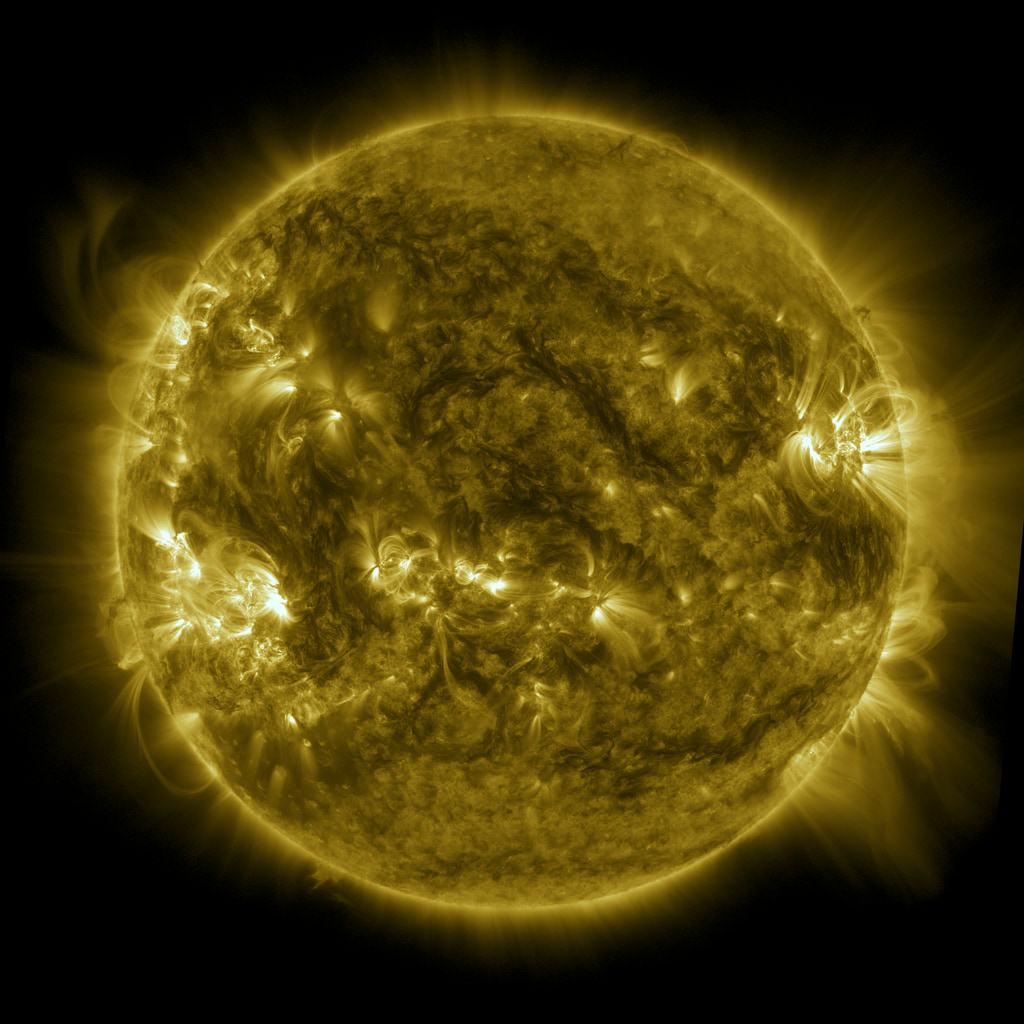
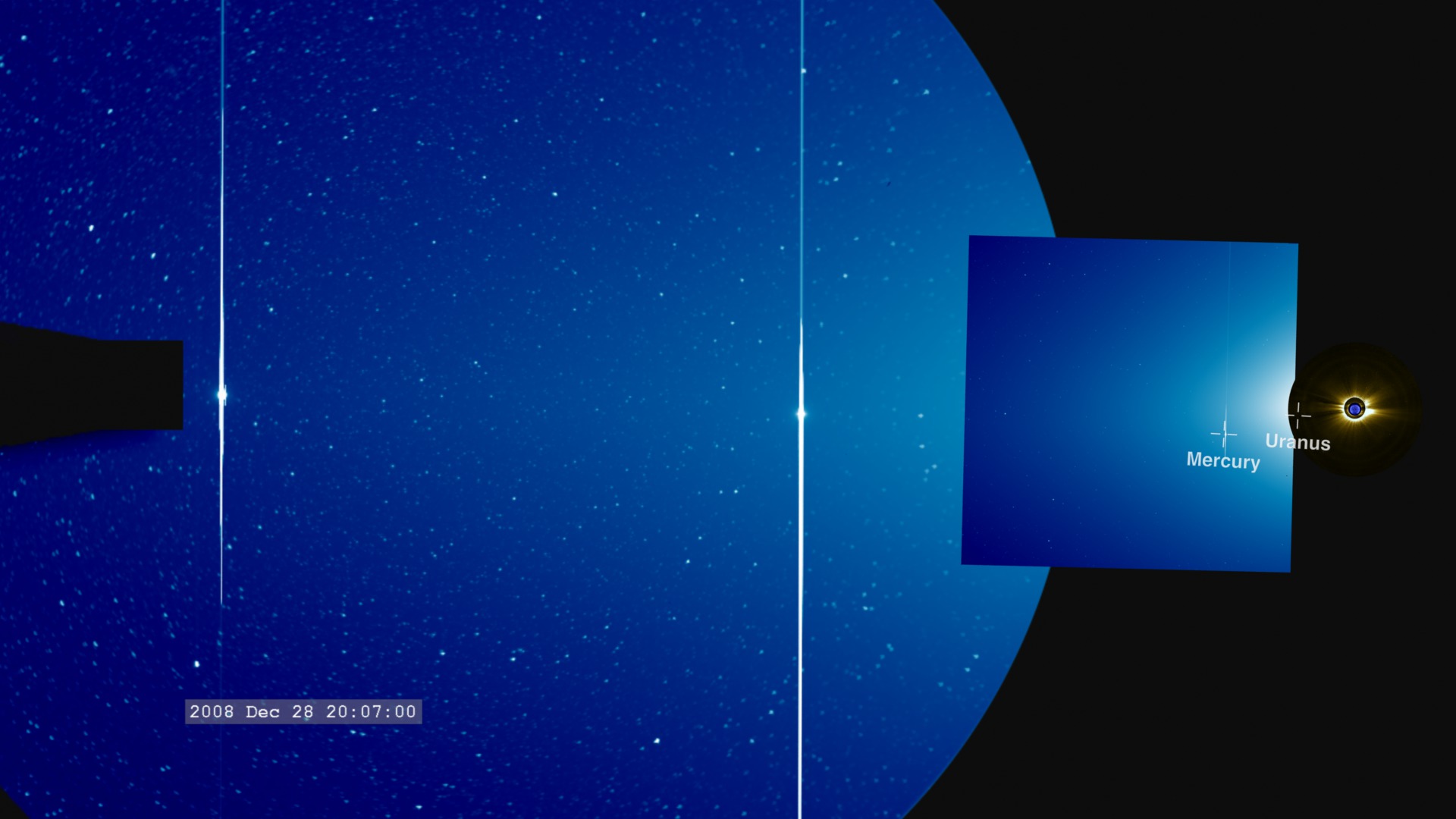
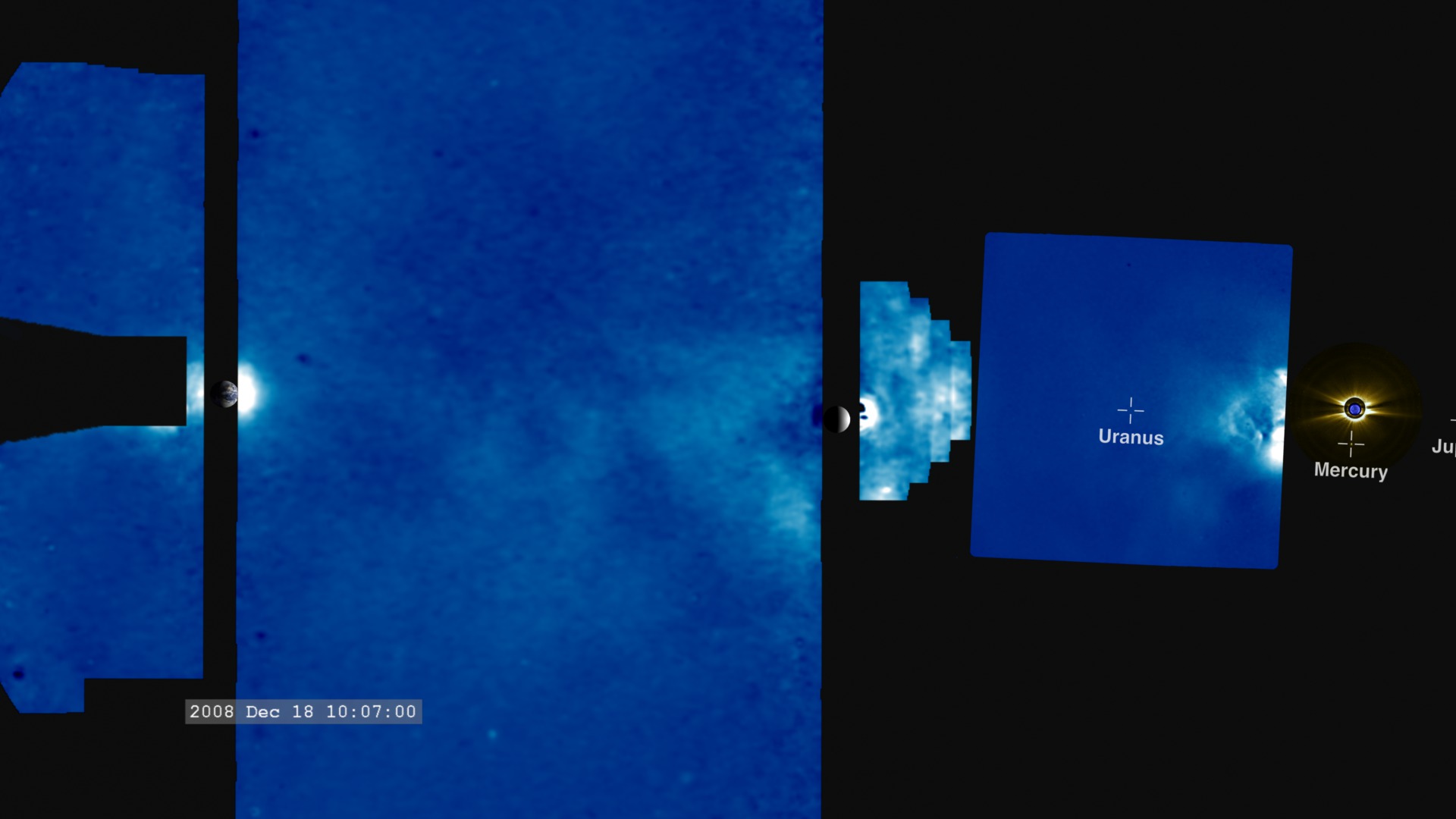

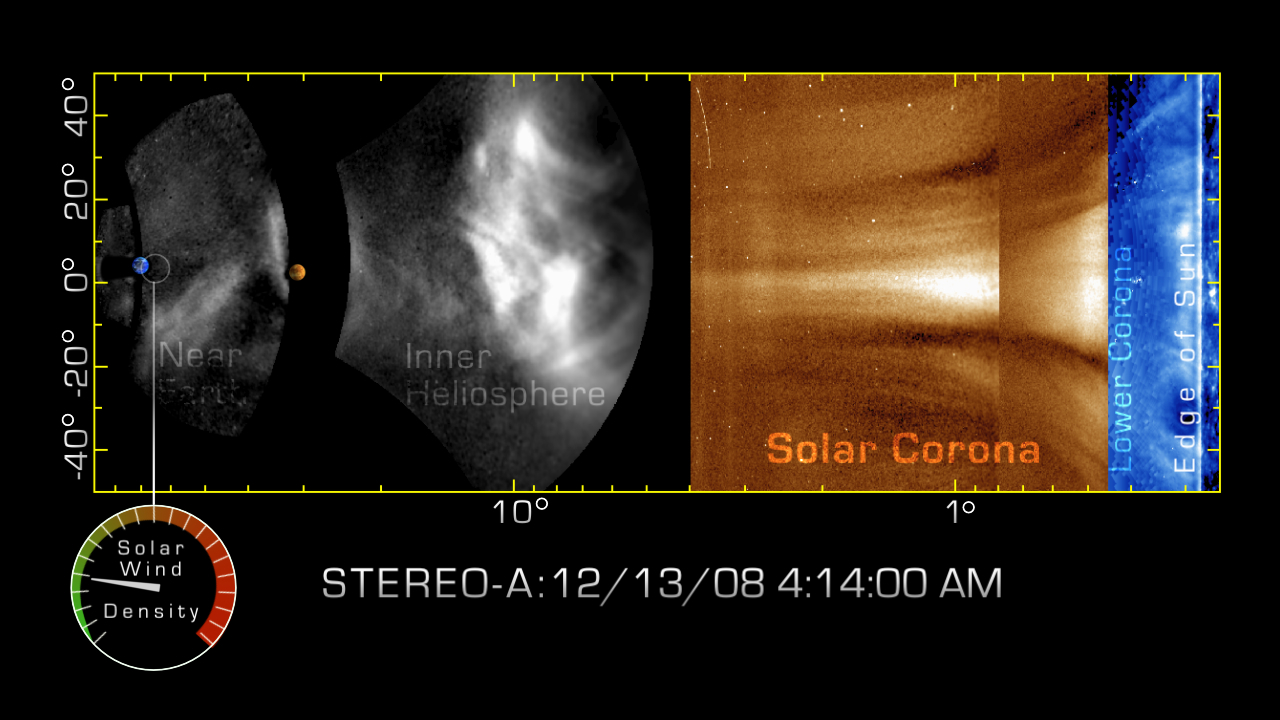
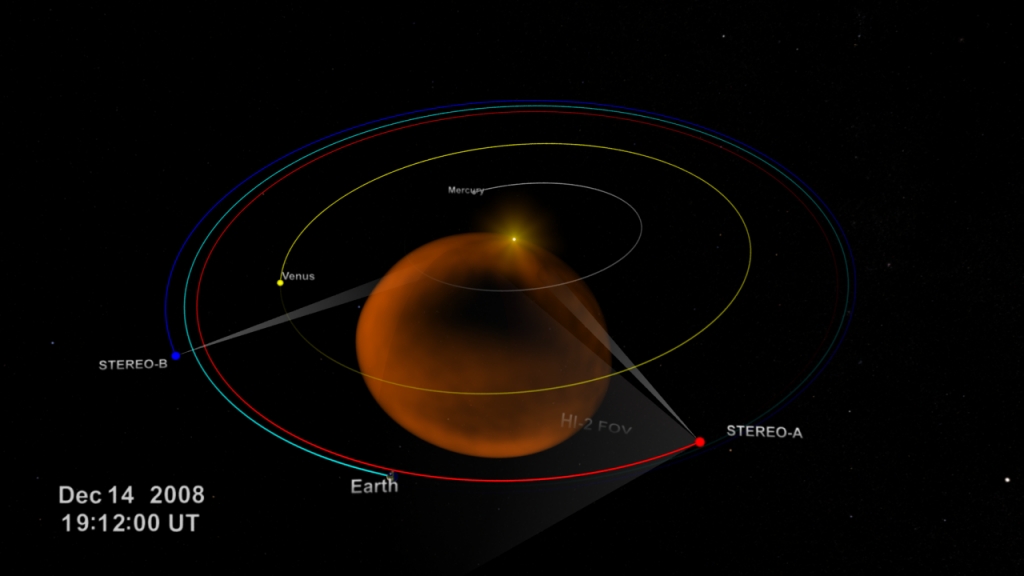
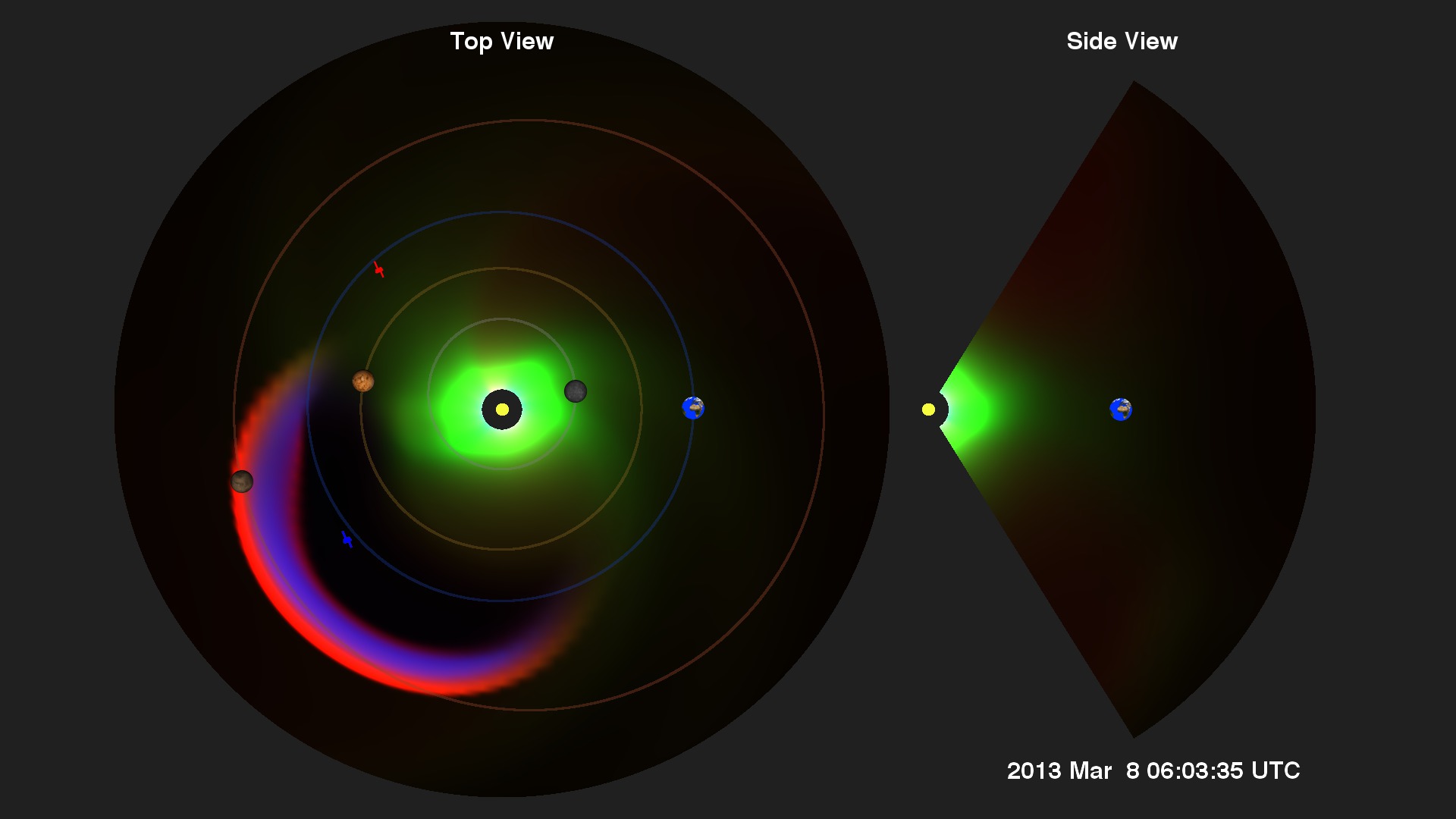
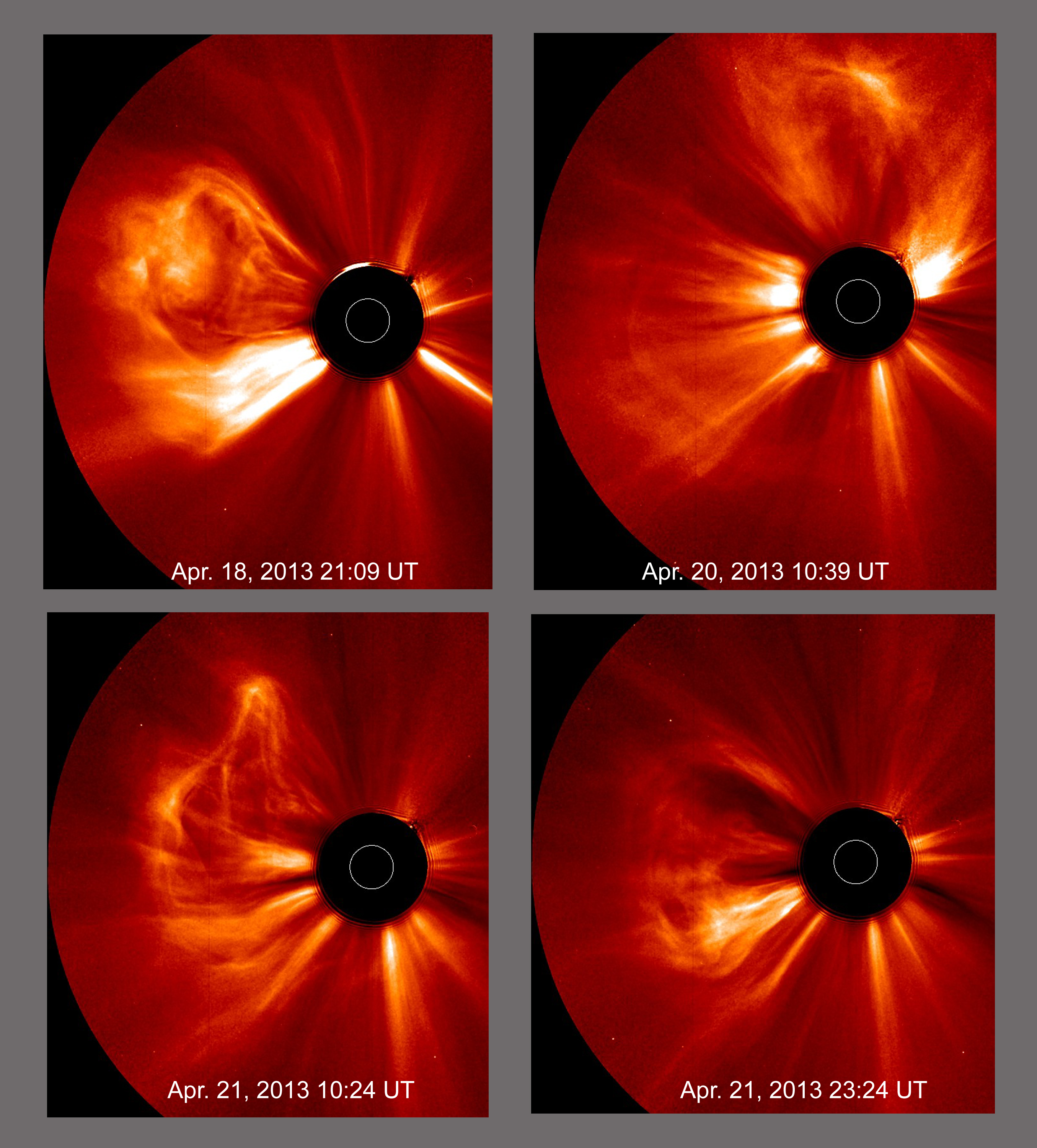
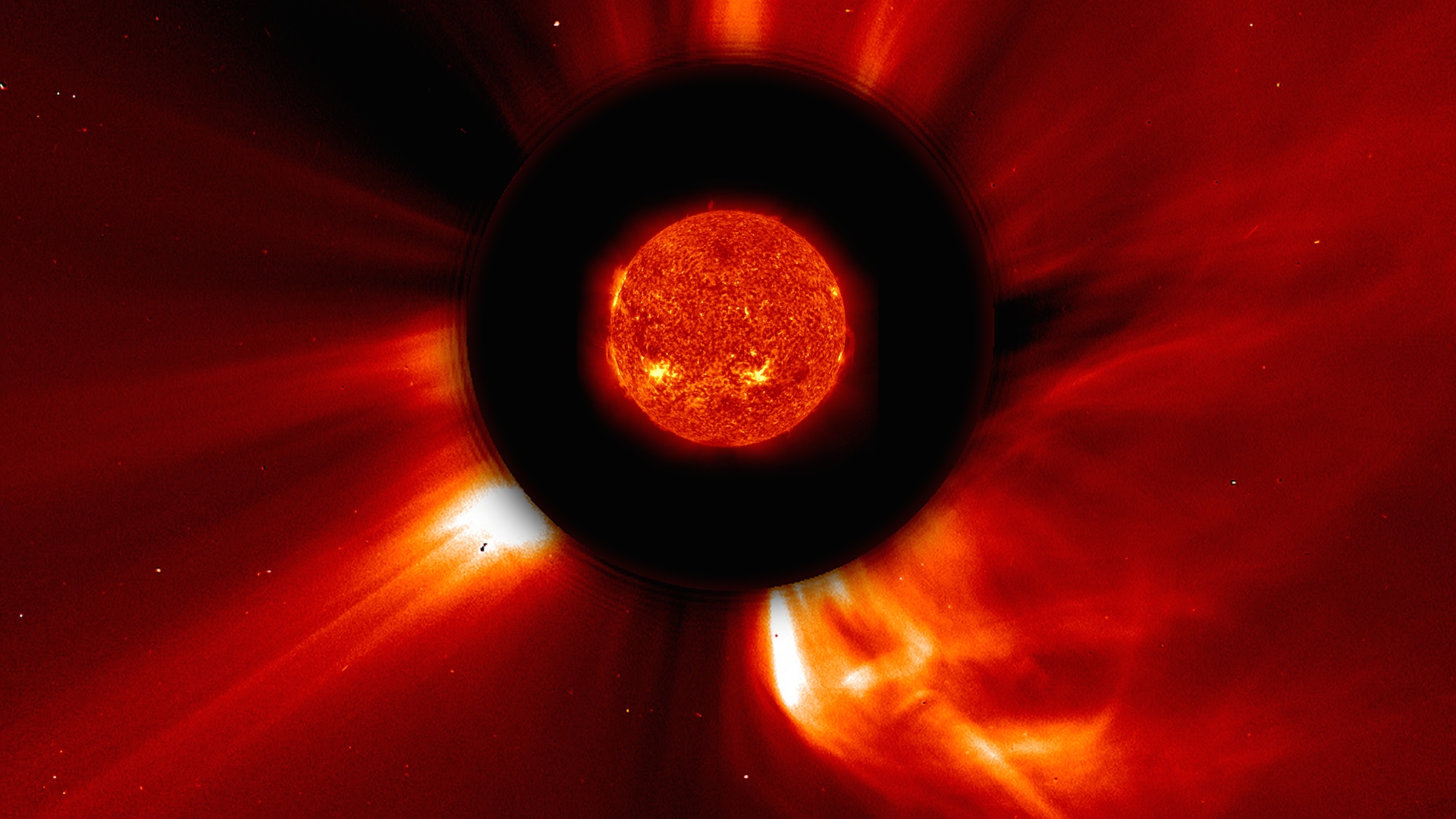

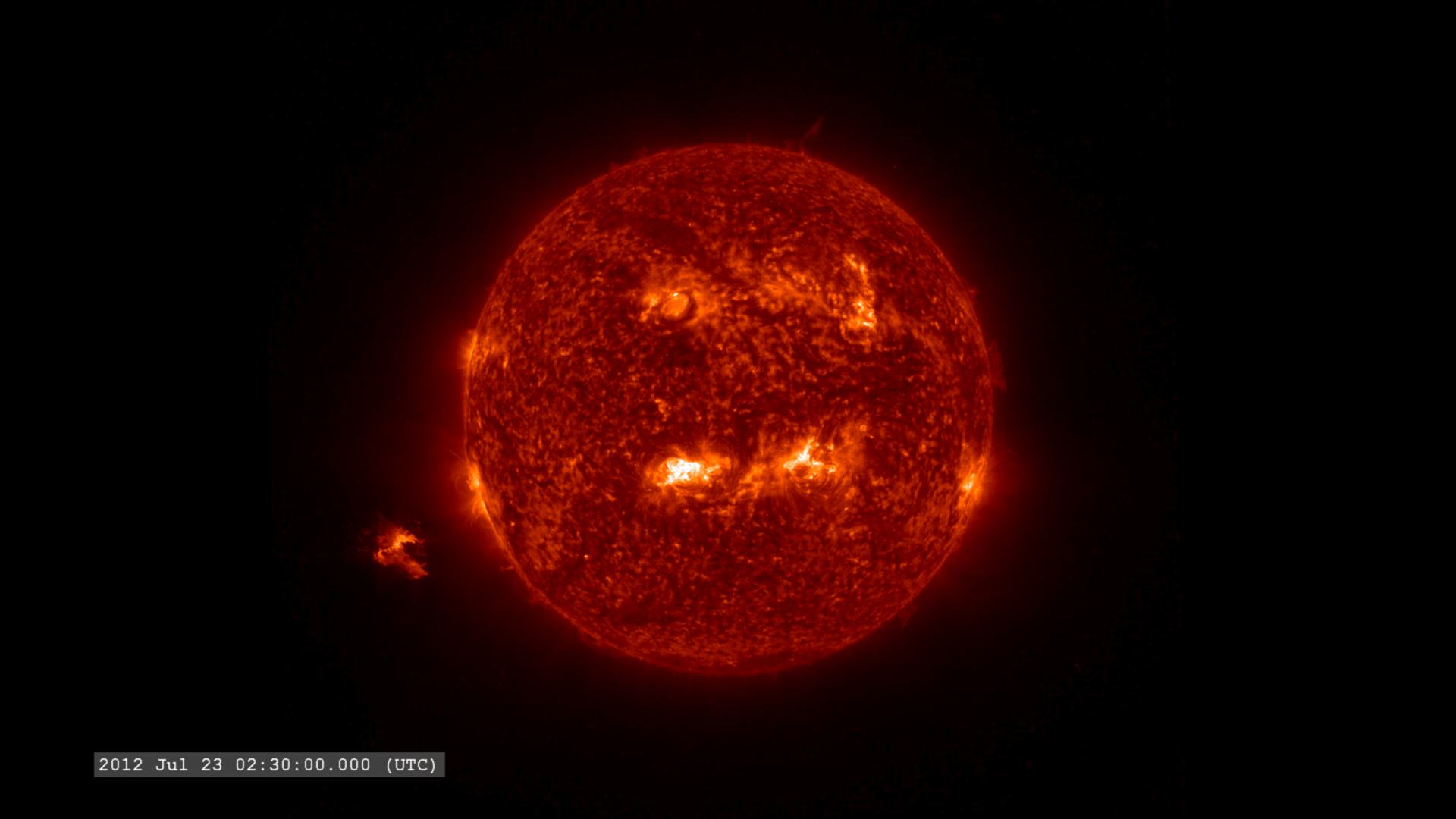
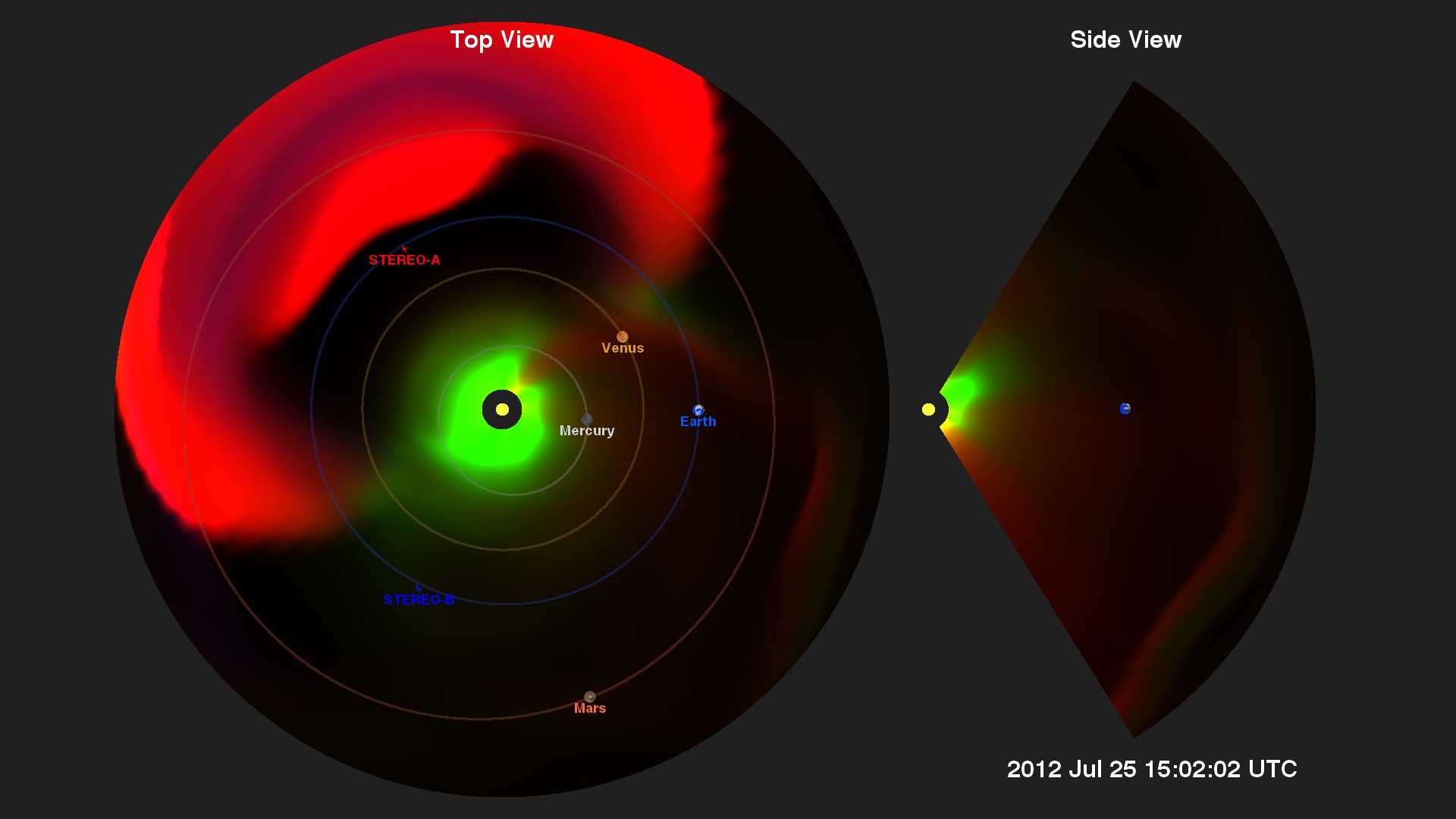
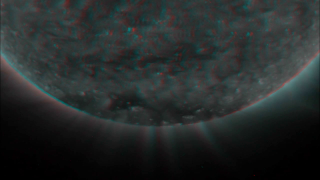
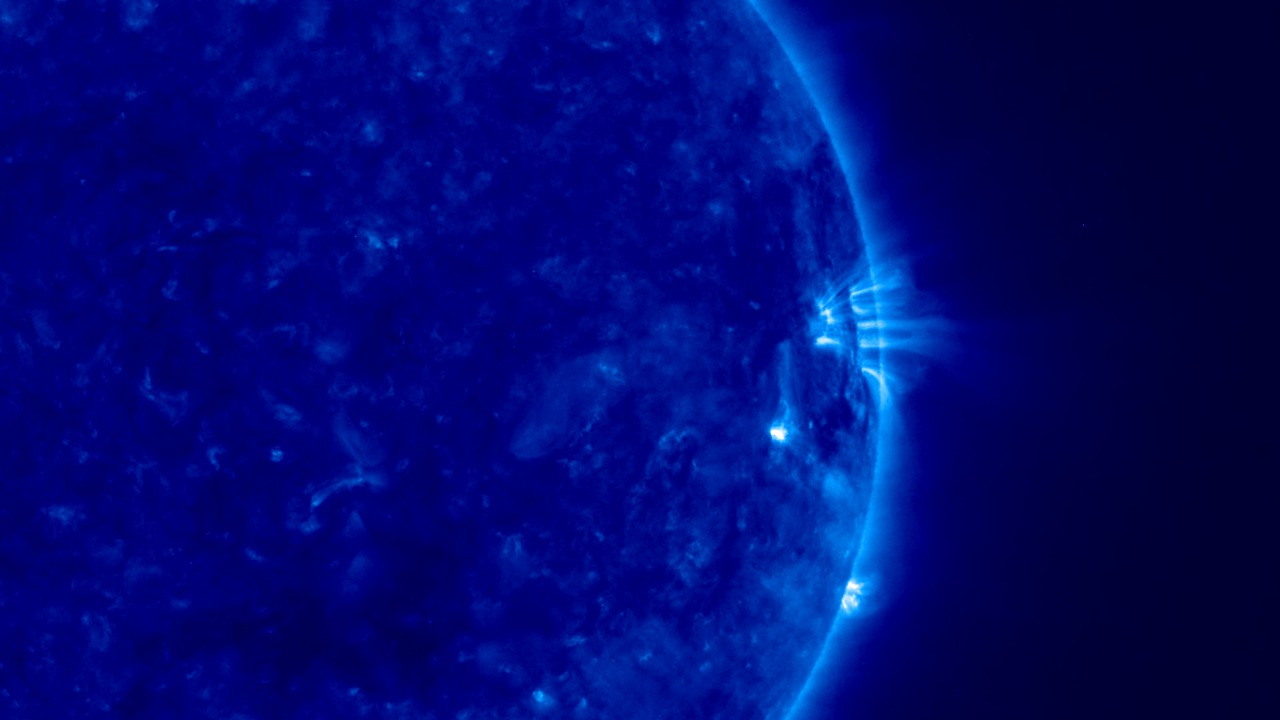






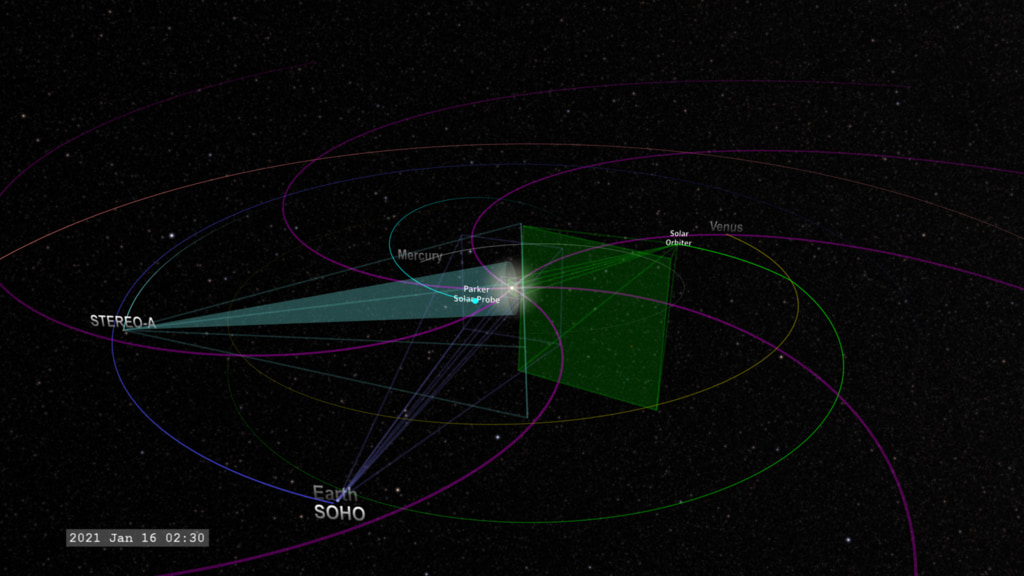
![This visualization opens with a top-down view, then transtions to an oblique view of the inner solar system with the various solar-observing missions conducting coordinated observations of the plasma environment. This version displays the imaging instrument camera frustums and solar magnetic field alignments - the 'glyph' version. A version with just the orbits, no 'glyphs' is available in the [Download Options] menu.](/vis/a000000/a004900/a004970/SolarSynergiesPlus.Encounter2022FebTop2Side.HAE.AU.glyphs_CRTT.HD1080.01300_print.jpg)
